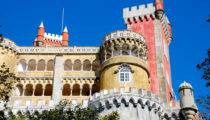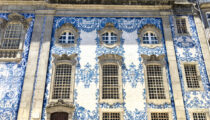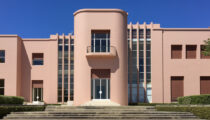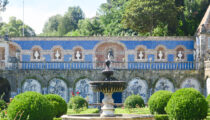November 7, 2022
Spectacular Architecture, Gardens & Interiors in Lisbon and Sintra, Portugal
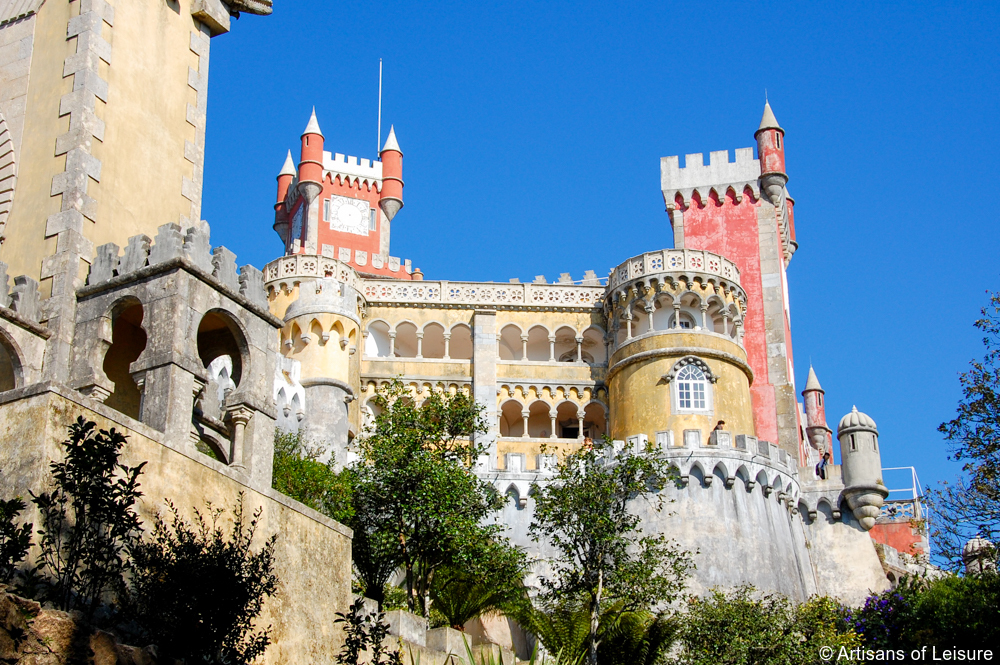
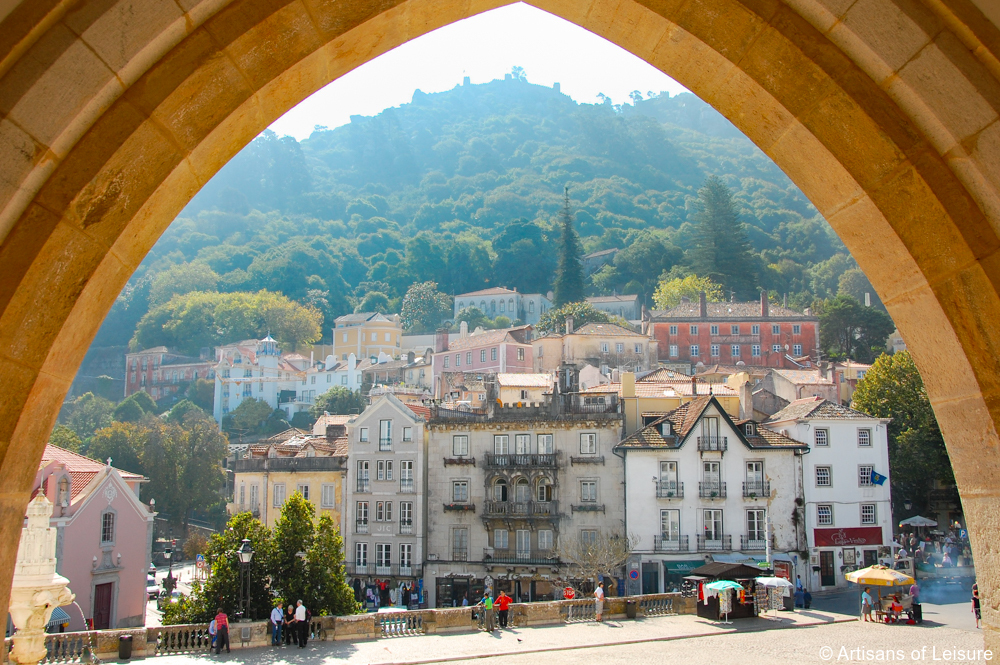
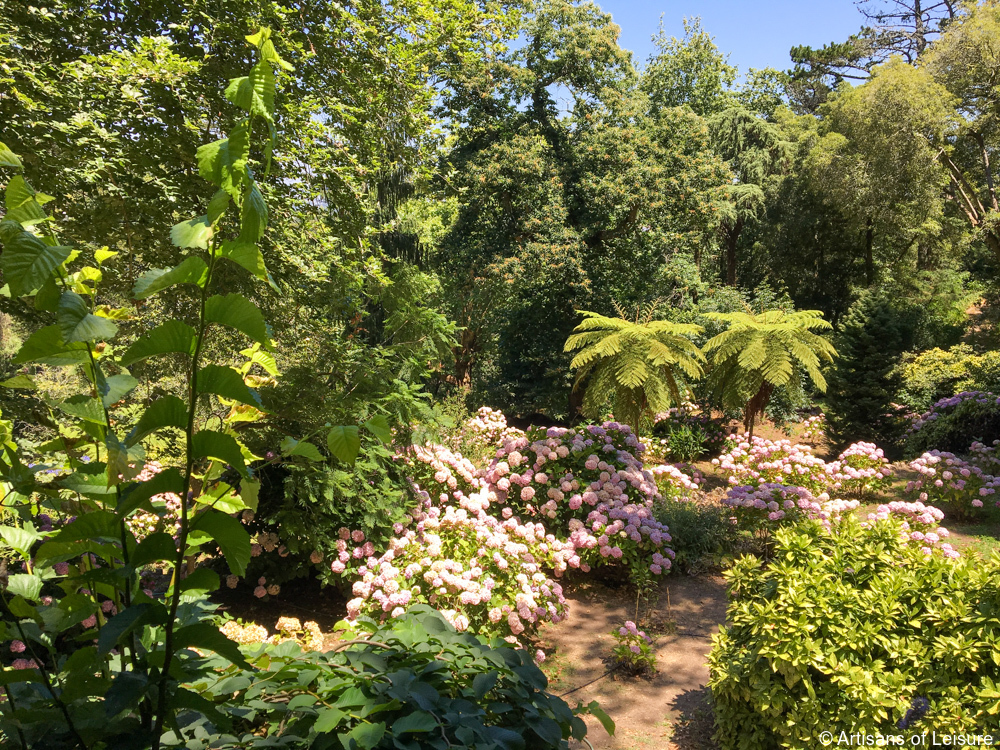
UNESCO recognized the Cultural Landscape of Sintra as a World Heritage Site in 1995, citing its influence in the development of Romantic architecture and landscape design in 19th-century Europe.
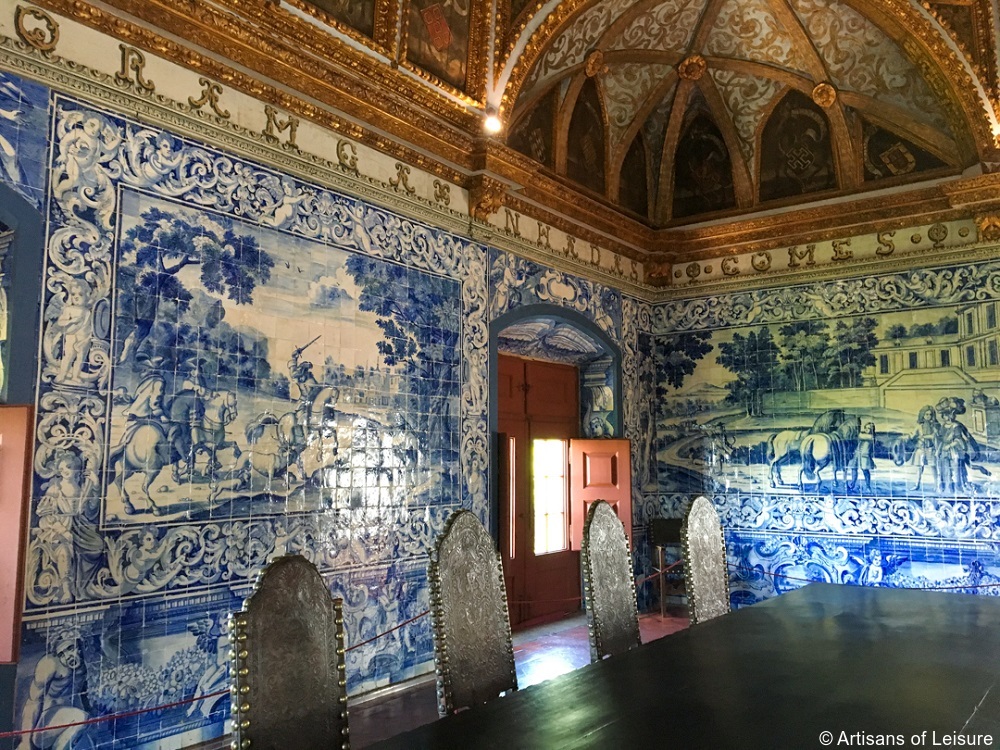
Artisans of Leisure private Portugal tours include the best of the Lisbon-Sintra region, including these favorites:
National Palace of Sintra
In the historic center of town is the National Palace of Sintra, a whitewashed landmark distinguished by its pair of conical chimneys. Considered one of the oldest royal palaces in Portugal, it’s believed to have been built on the remains of a 10th-century Moorish palace.
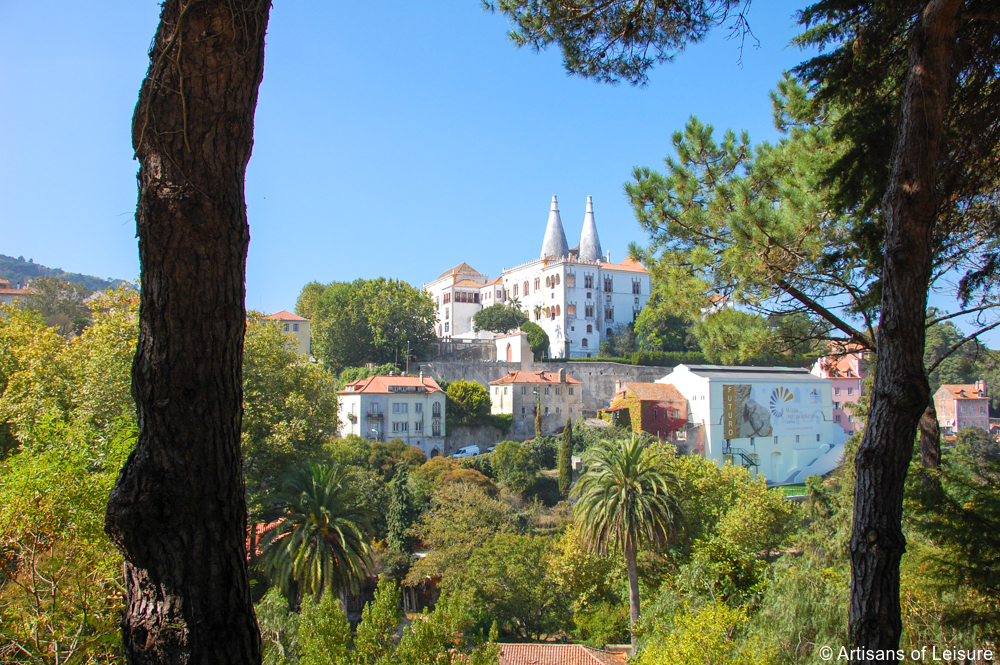
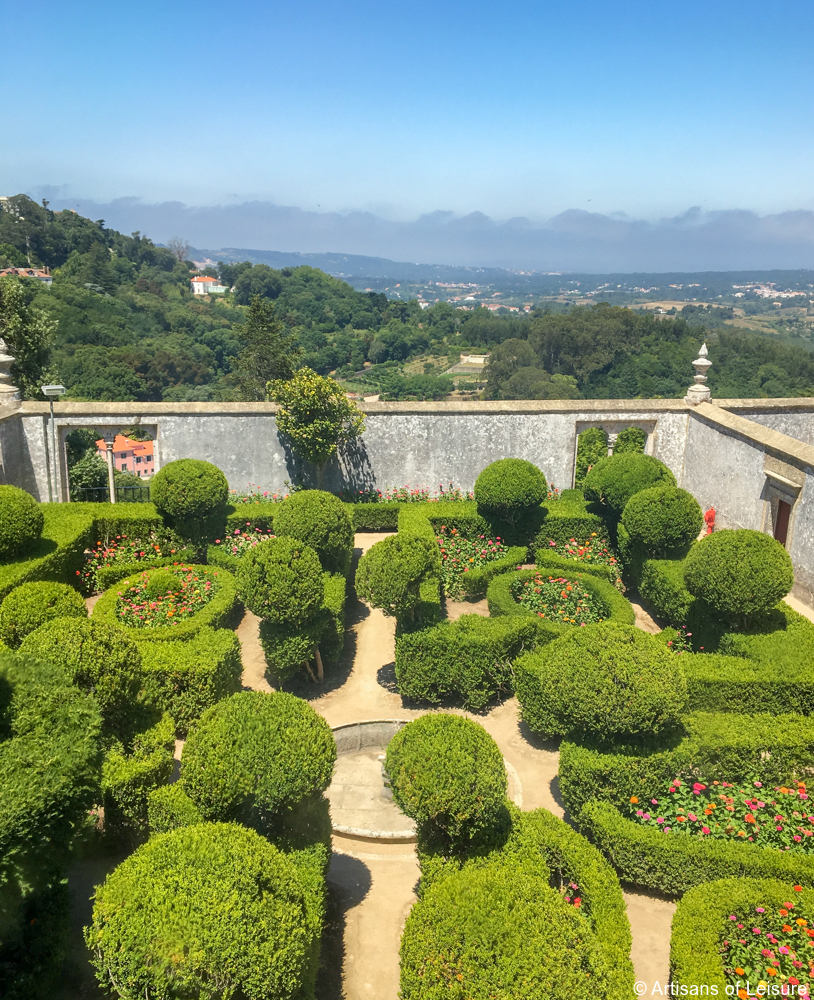
Much of the current structure dates from the 14th through 16th centuries, with major restoration work following the earthquake that struck the region in 1755.
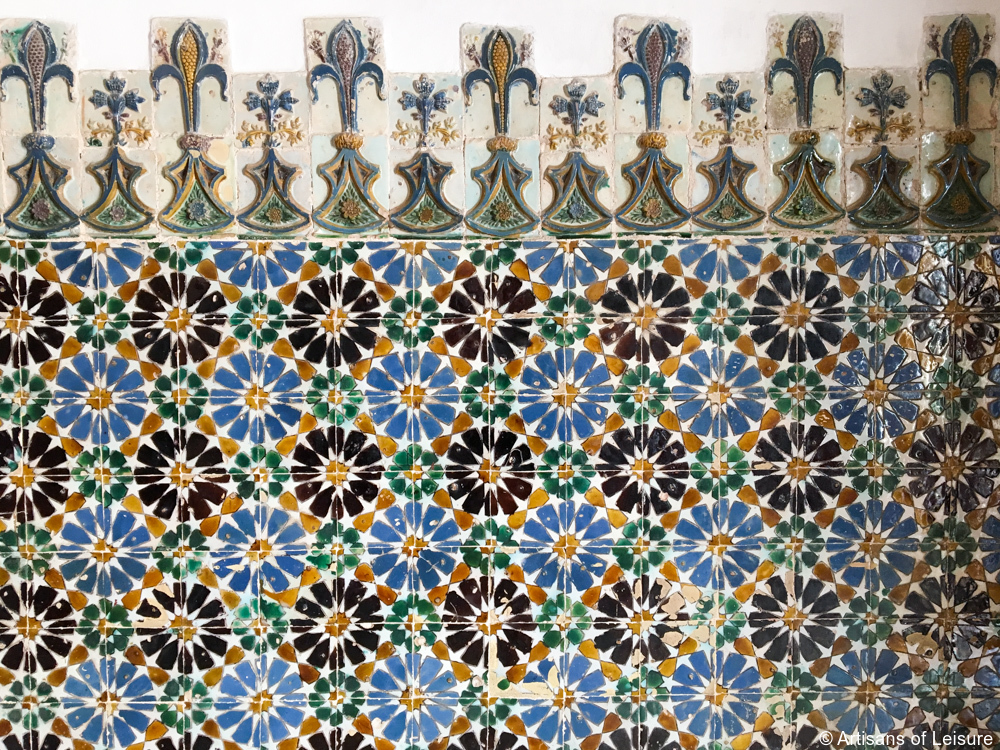
The architecture and interior design of the palace—combining Gothic, Renaissance, Manueline and Mudejar (Moorish-Iberian) styles—reflect the changing tastes and ongoing construction over the years.
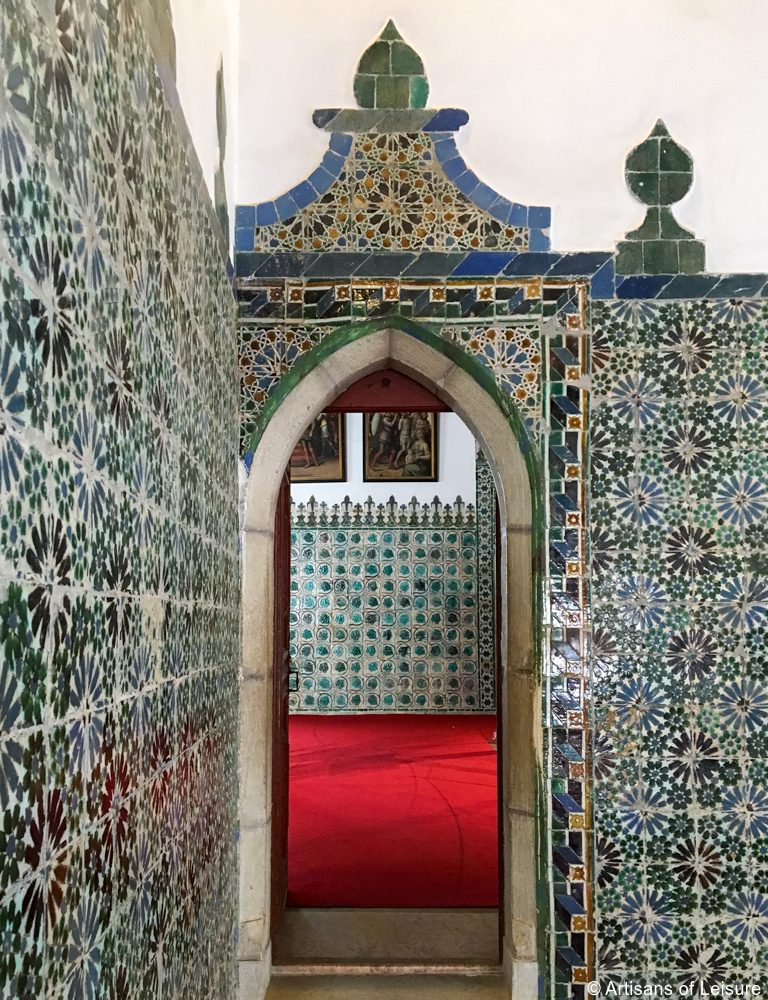
Highlights of the National Palace of Sintra include the original 14th-century chapel (the oldest surviving room), vast kitchens, richly decorated ceilings and an abundance of decorative tiles.
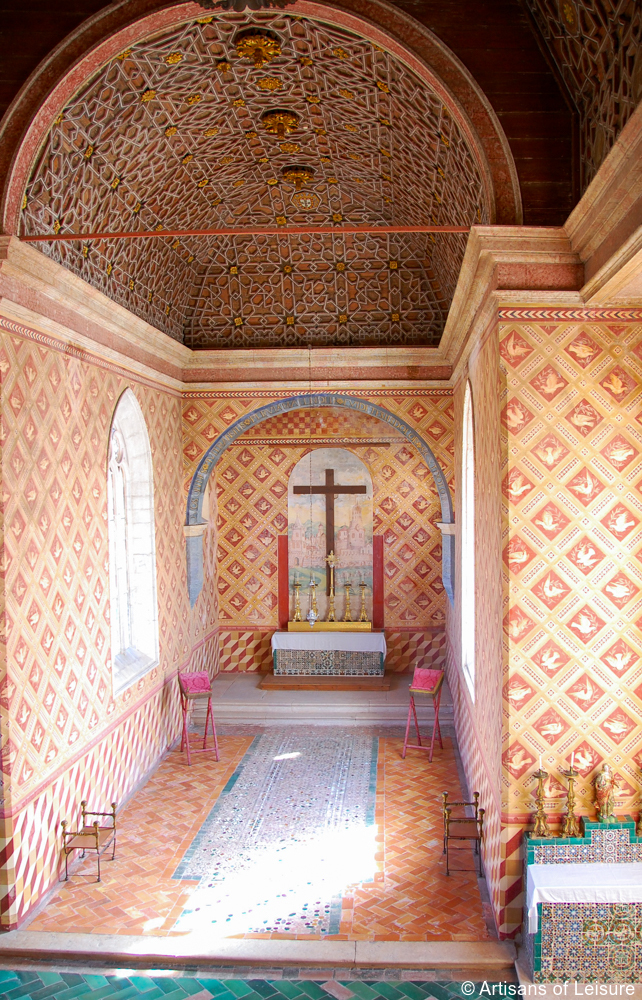
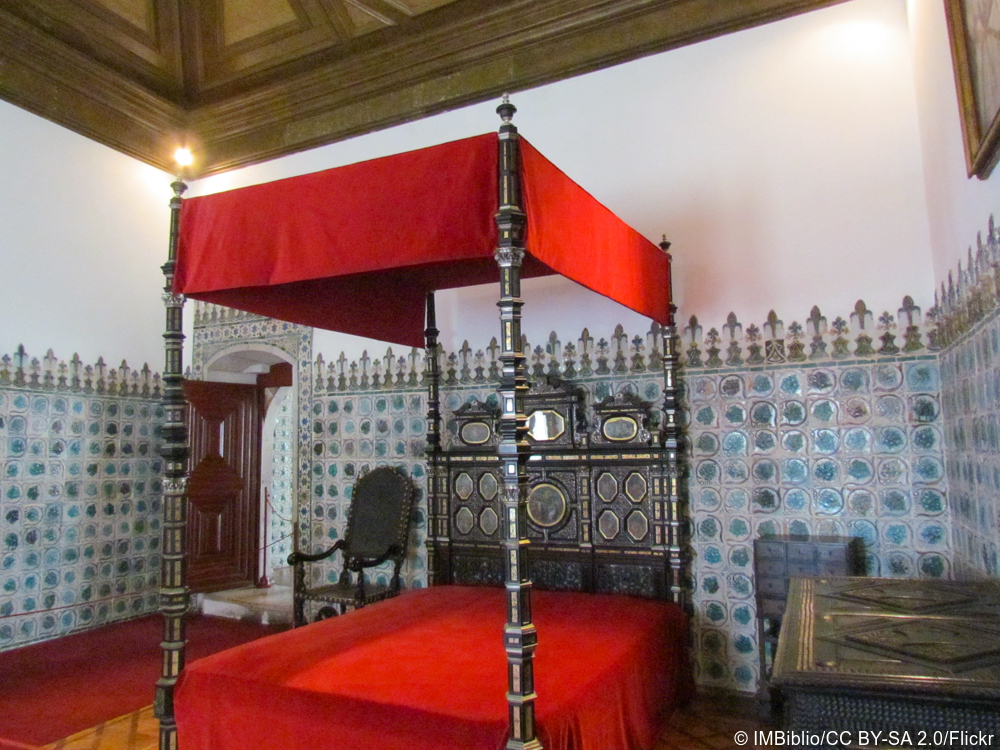
The exquisite blue-and-white azulejos (tin-glazed ceramic tiles) that decorate the palace walls are considered among the finest in Portugal.
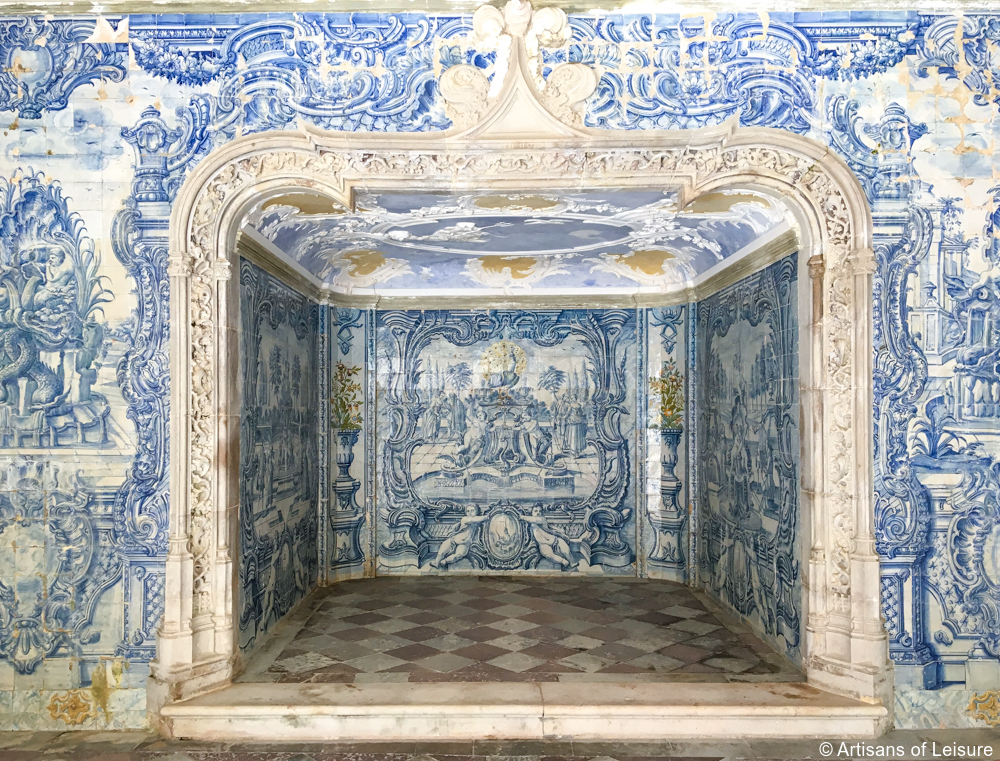
Upon request, Artisans of Leisure can arrange an exclusive after-hours visit to the National Palace of Sintra.
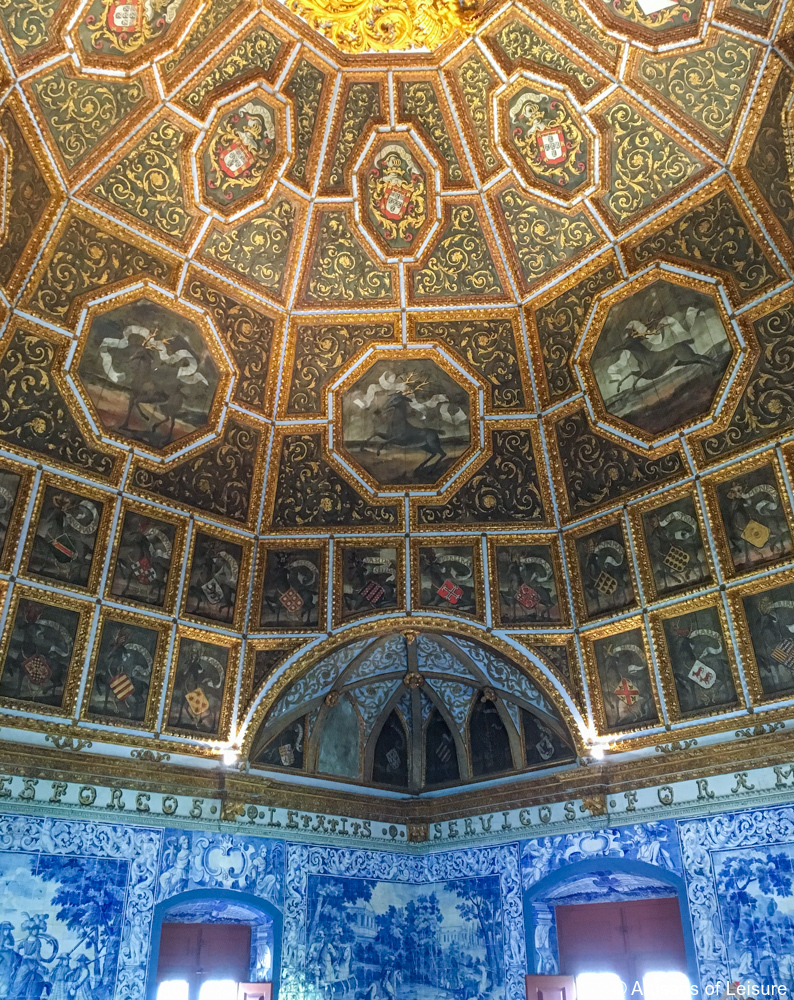
Quinta da Regaleira
Italian architect and set designer Luigi Manini designed the ornate, neo-Gothic villa known as the Quinta da Regaleira in the late 1800s.
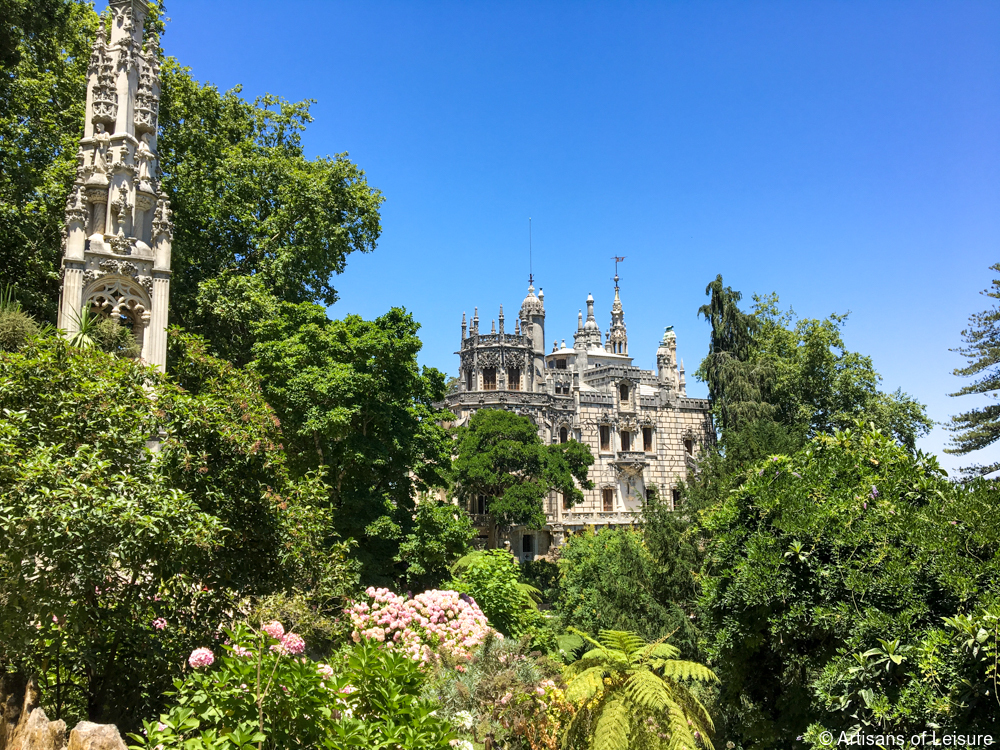
The esoteric symbols of the Freemasons, Knights Templar and Rosicrucians decorating many surfaces reflect the interests of the owner, a prominent Portuguese-Brazilian businessman.
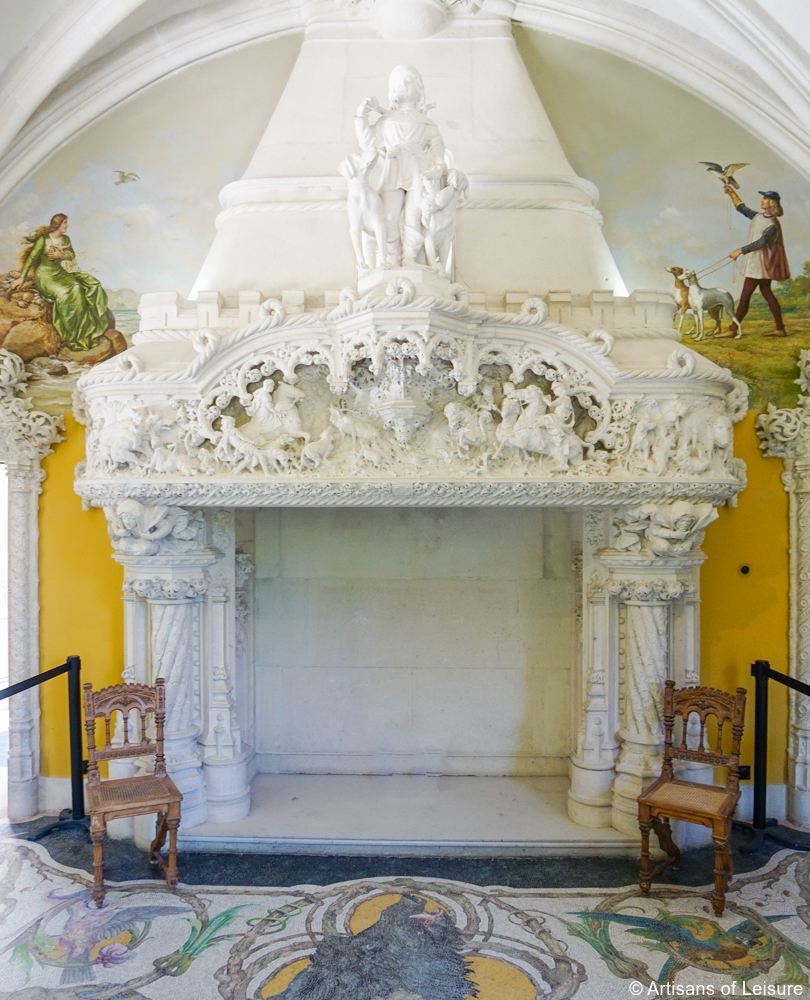
Grottoes, fountains and pavilions animate the garden.
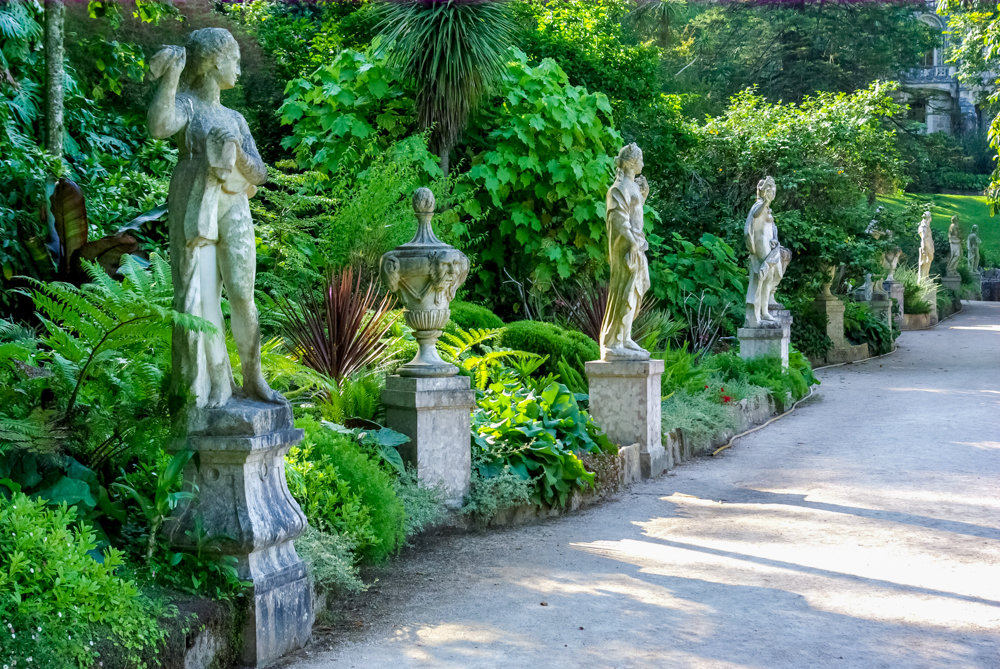
Two mysterious initiation wells in the garden were used for secret rituals rather than for storing water. These “underground towers” have spiral staircases that lead down to tunnels that connect to other monuments and caves on the grounds.
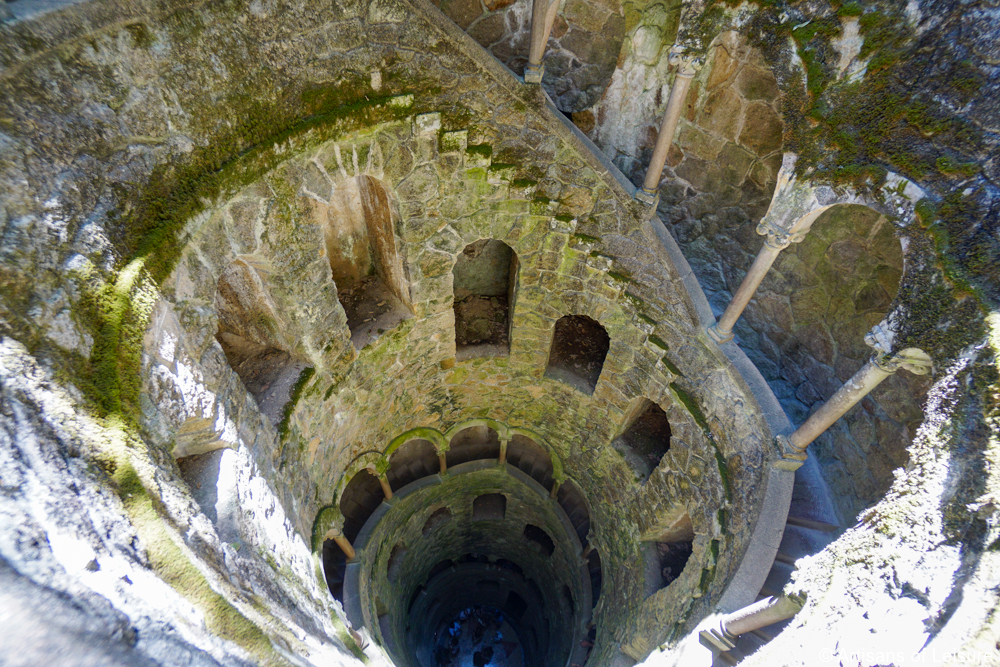
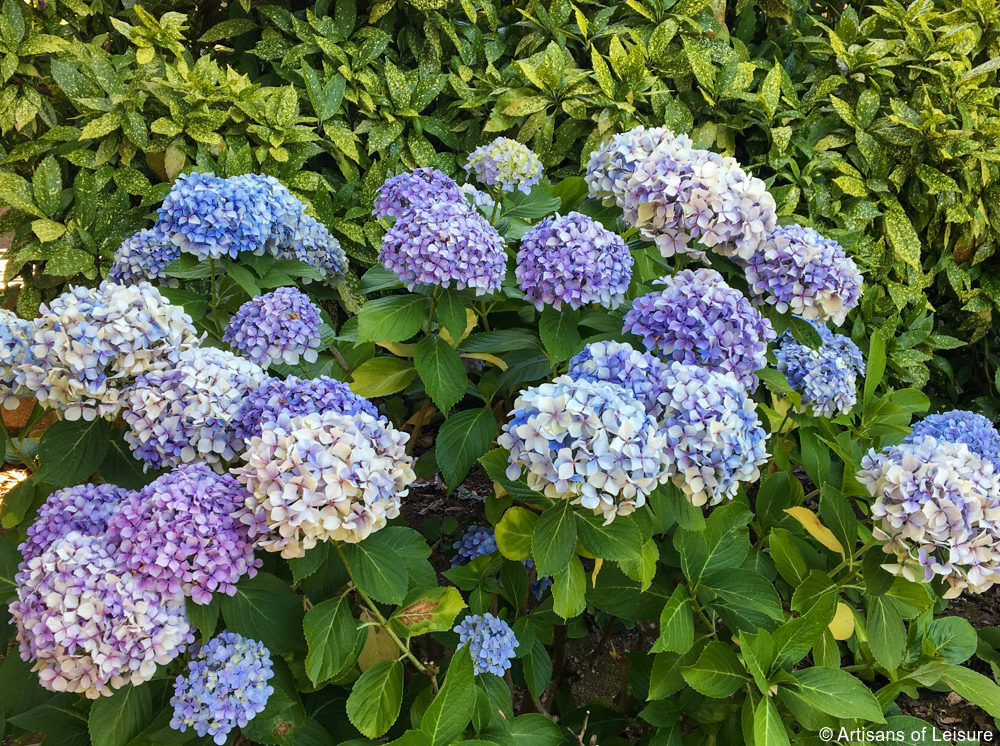
National Palace of Pena
Crowning a mountain high above Sintra, the National Palace of Pena is a Romantic castle with crenellated towers and terraces painted in vibrant colors.
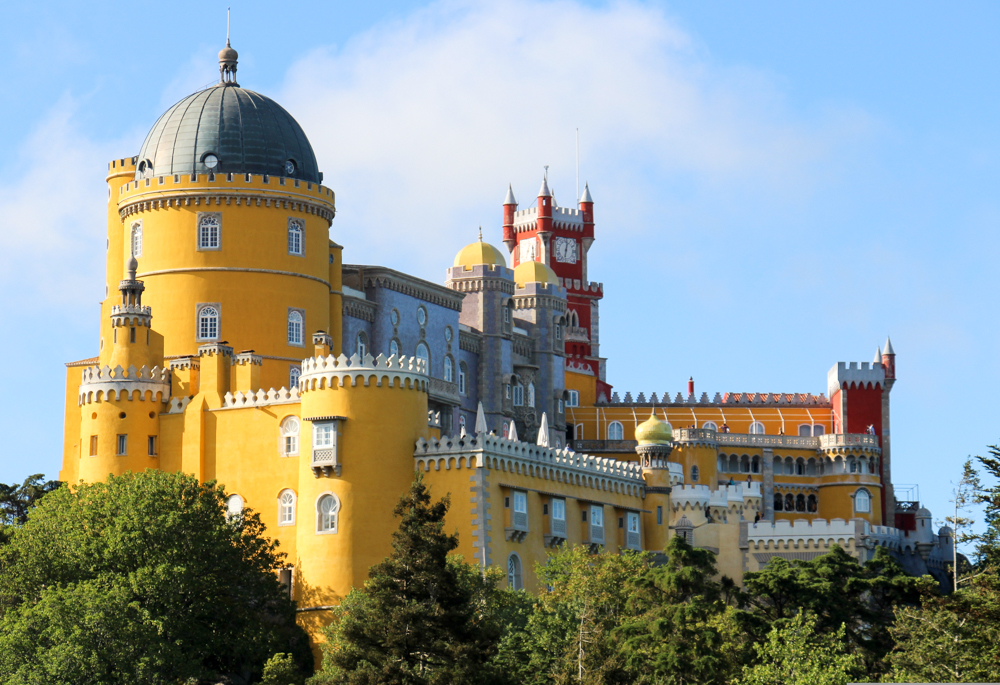
Ferdinand II, a German prince married to Queen Maria II, built the palace in the 1840s on the ruins of a medieval monastery. The exuberant pastiche of Gothic, Renaissance and Moorish architectural styles was intended as a royal residence rather than as the seat of government.
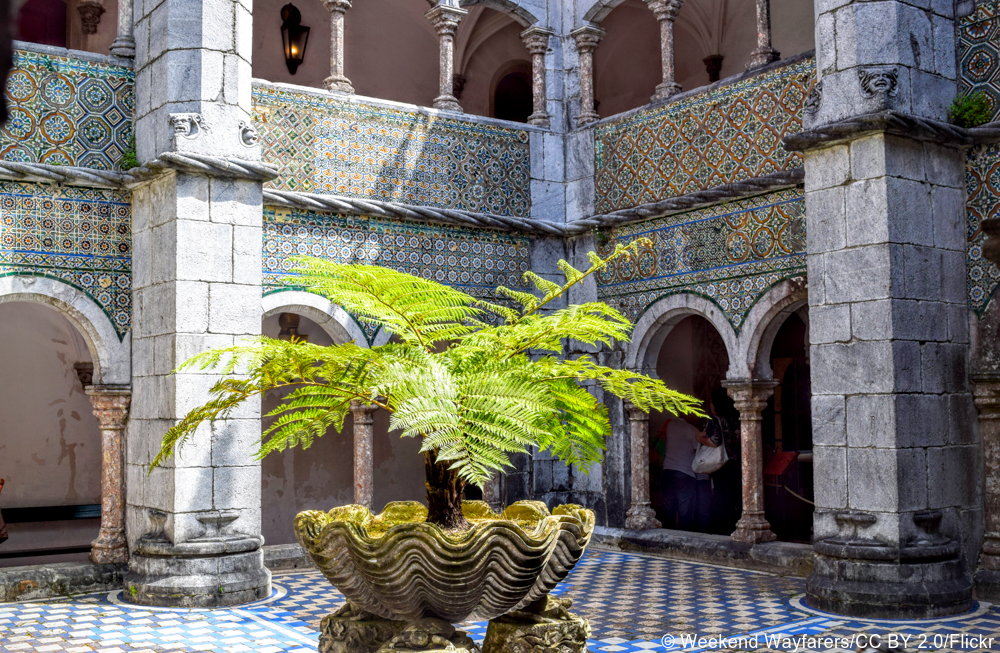
A variety of sources inspired the architecture, including medieval castles along the Rhine Valley, Islamic design and Ferdinand’s love of opera. Pena Palace is comparable in vision and location to Neuschwanstein Castle in Germany, constructed a few decades later.
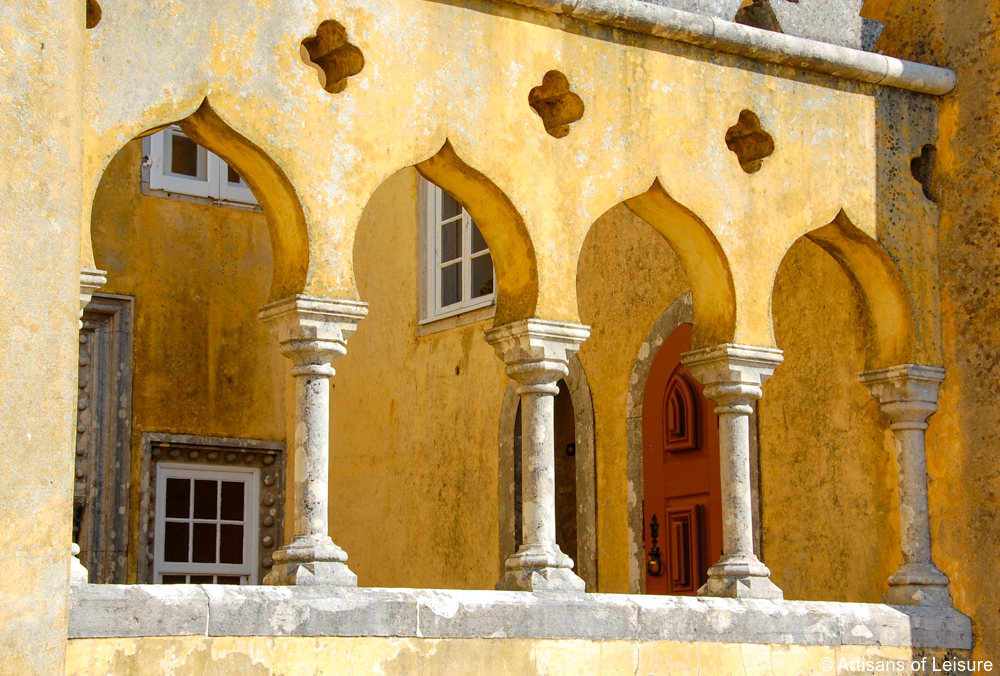
Highlights of Pena Palace include ornate staterooms, tiled courtyards and panoramic vistas from the terraces. One memorable view takes in the stone walls and guard towers of an ancient Moorish castle that climb the steep slopes of a nearby mountaintop. Frederick II restored the castle as a Romantic ruin in the 19th century.
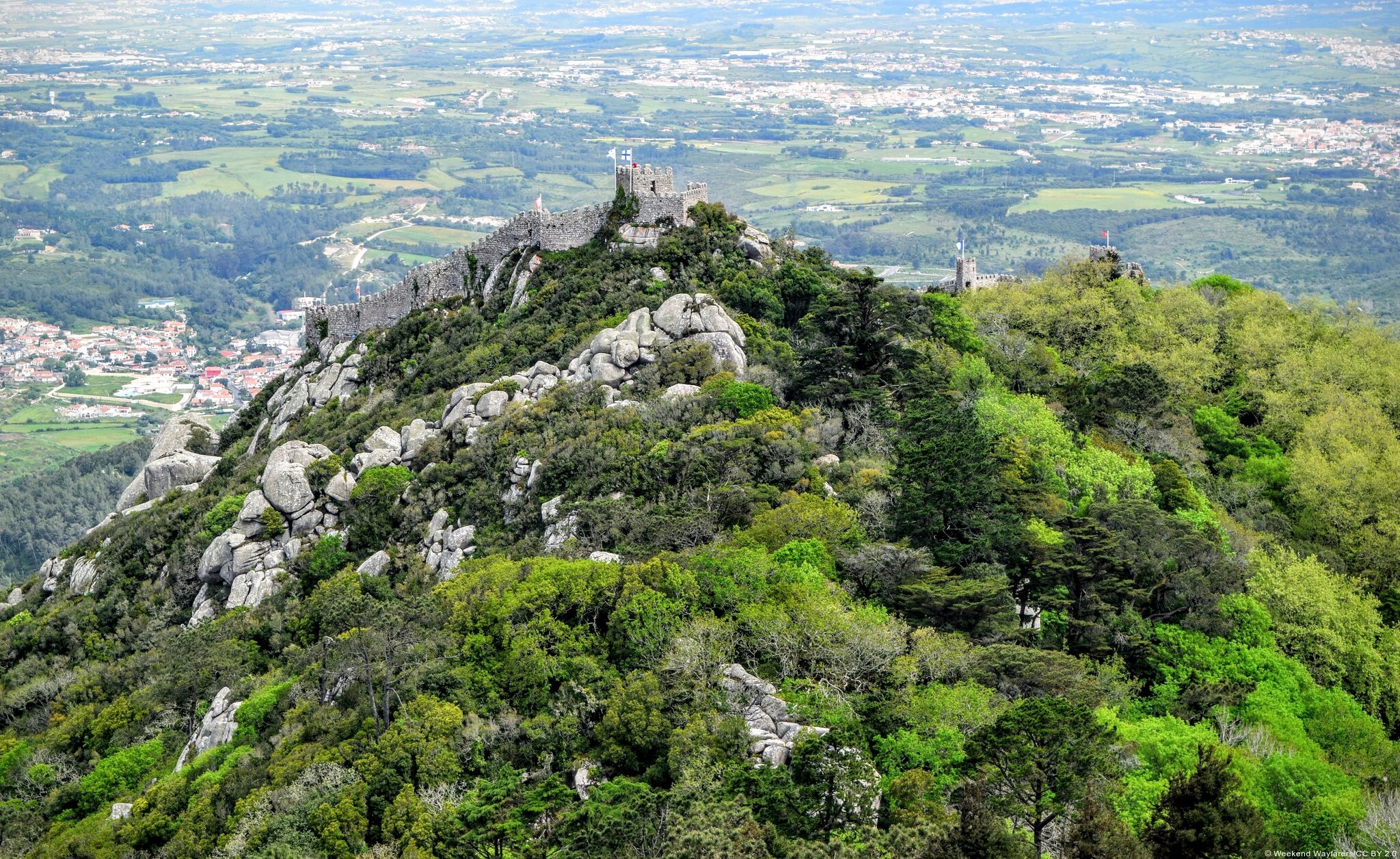
The vast grounds of Pena Park are another must. An outstanding example of Romantic landscape design, Pena Park is a fantastical forest filled with exotic plants, ornamental pavilions and water features. Such Romantic gardens emphasized the wildness of nature, breaking with the orderly, formal landscape design that dominated aristocratic European gardens in previous centuries.
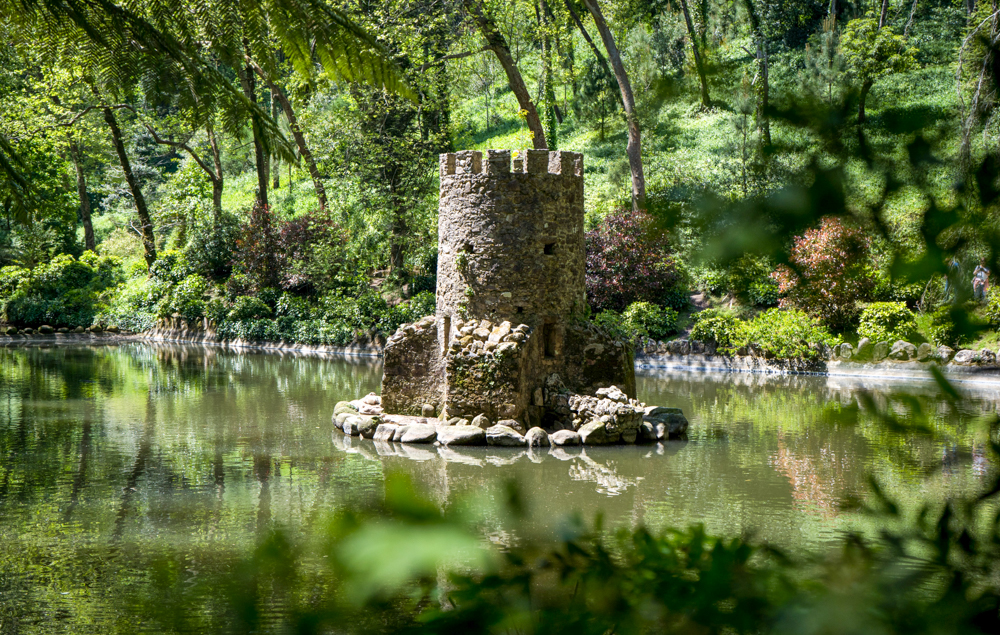
Sintra’s unique microclimate creates ideal conditions for a rich diversity of imported species, including magnolias from North America, ginkgoes and camellias from China and Japan, and ferns from Australia and New Zealand.
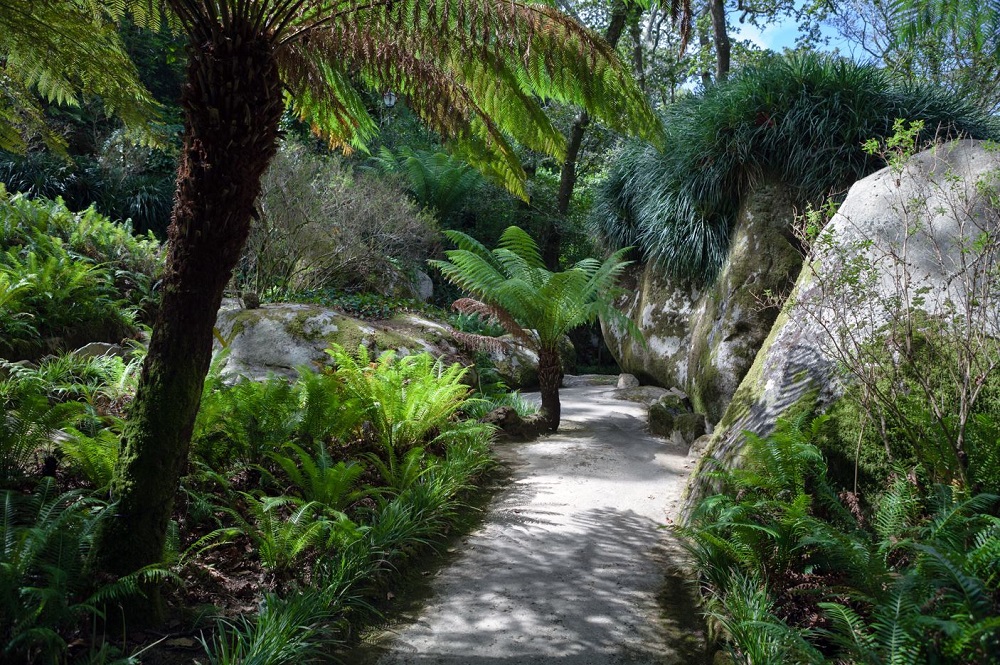
Tucked away in Pena Park is the Chalet of the Countess of Edla, a Swiss-style chalet built in the 1860s as a retreat from Pena Palace for Ferdinand II and his second wife, Swiss-American opera singer Elise Hensler.
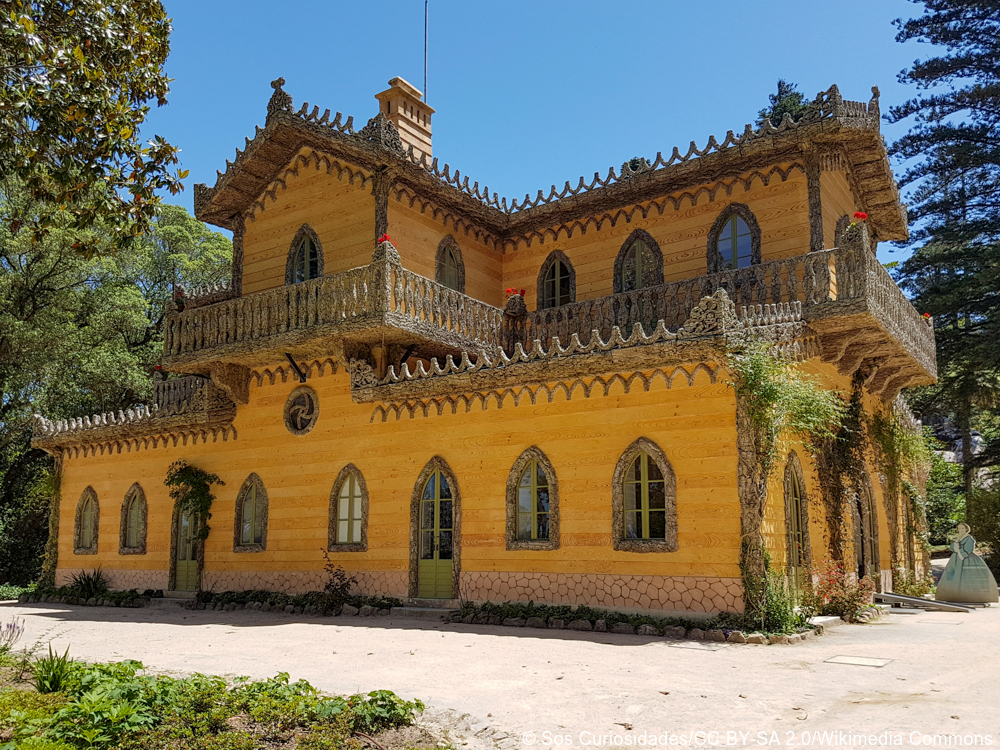
Elise was passionate about botany and oversaw the design of the house and the surrounding gardens. The interiors are notable for their elaborate use of inlaid cork.
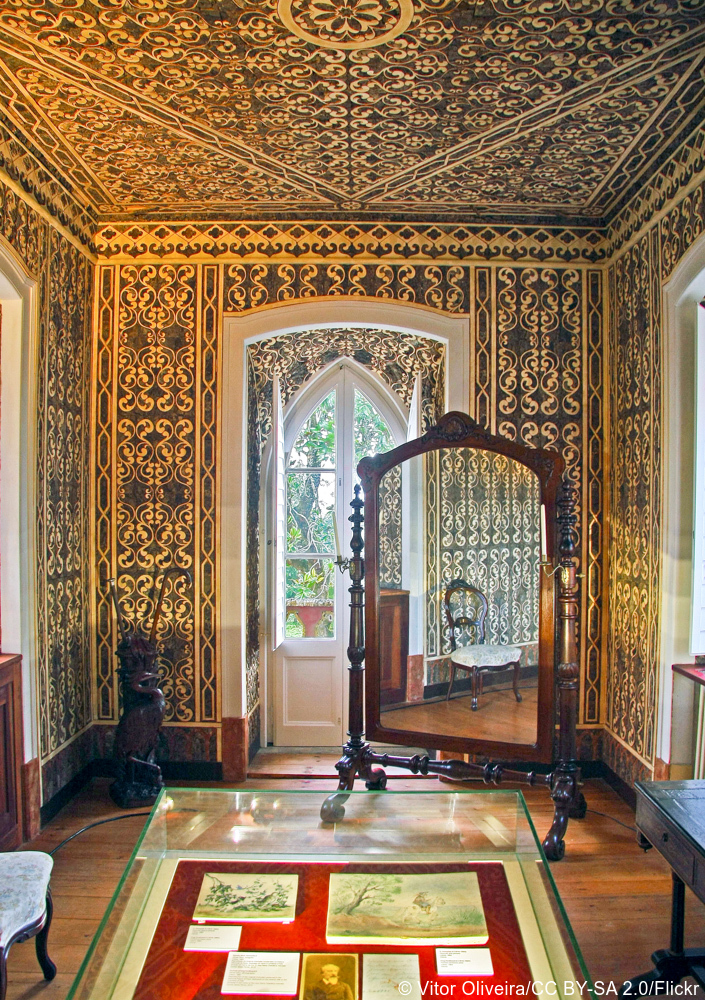
The vivid blue-and-white Lace Room served as Elise’s dressing room.
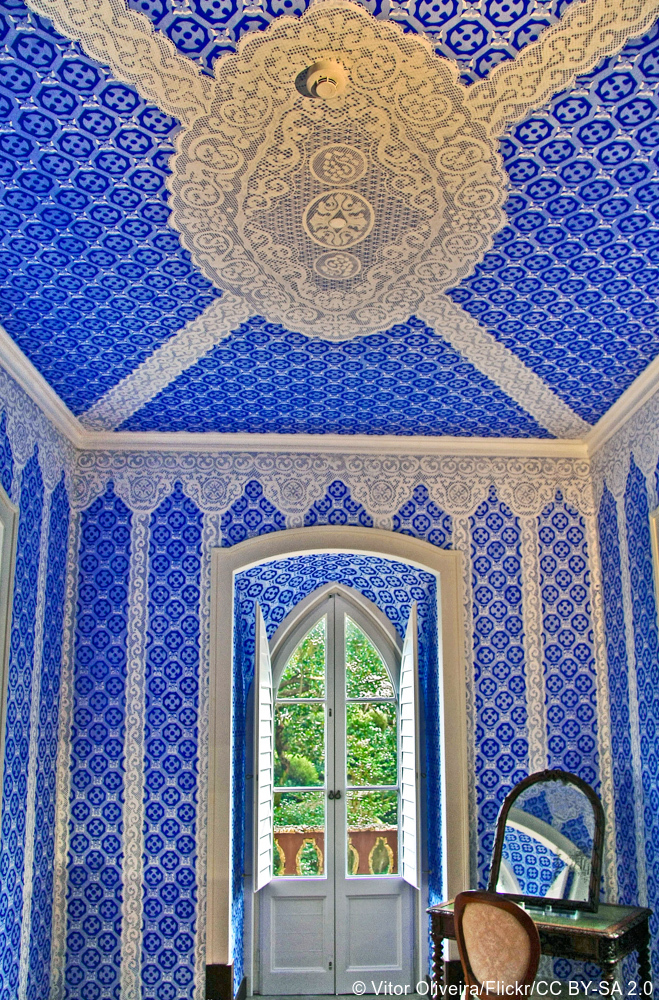
Upon request, Artisans of Leisure can arrange an exclusive after-hours visit to Pena Palace.
Park and Palace of Monserrate
Considered a highlight of Romantic architecture in Portugal, the exquisite Monserrate Palace was completed in 1866 as the summer residence of an English family.
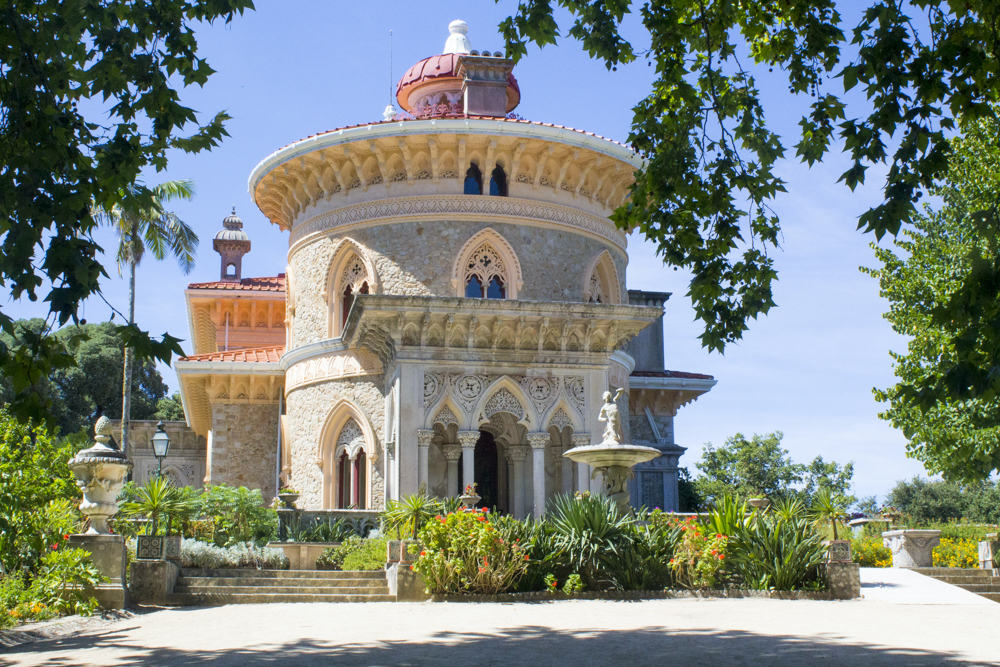
The exteriors and interiors at Monserrate are a fantastical fusion of Gothic, Moorish and Indian revivalist styles. Intricate latticework and repeating botanical motifs cover virtually every surface in a profusion of ornament that references the lush foliage in the surrounding gardens.
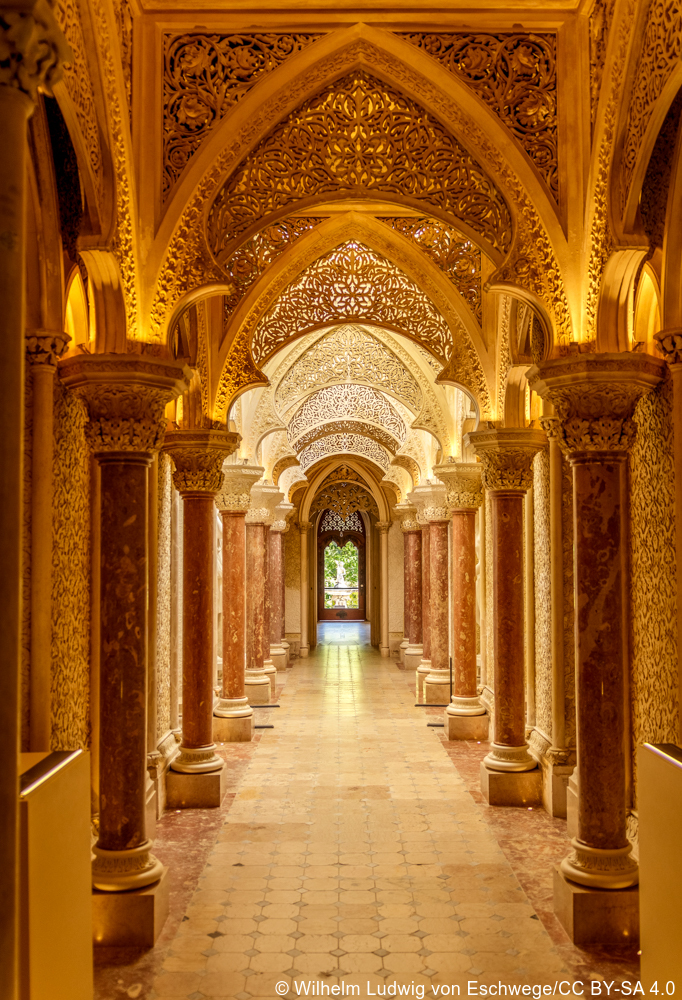
Monserrate is famous for the thousands of imported plant species that flourish in its impressive botanical gardens.
Highlights include a rose garden, a Mexican garden with palms and agaves, a Japanese garden with bamboo and camellias, and a valley of ferns from Australia and New Zealand.
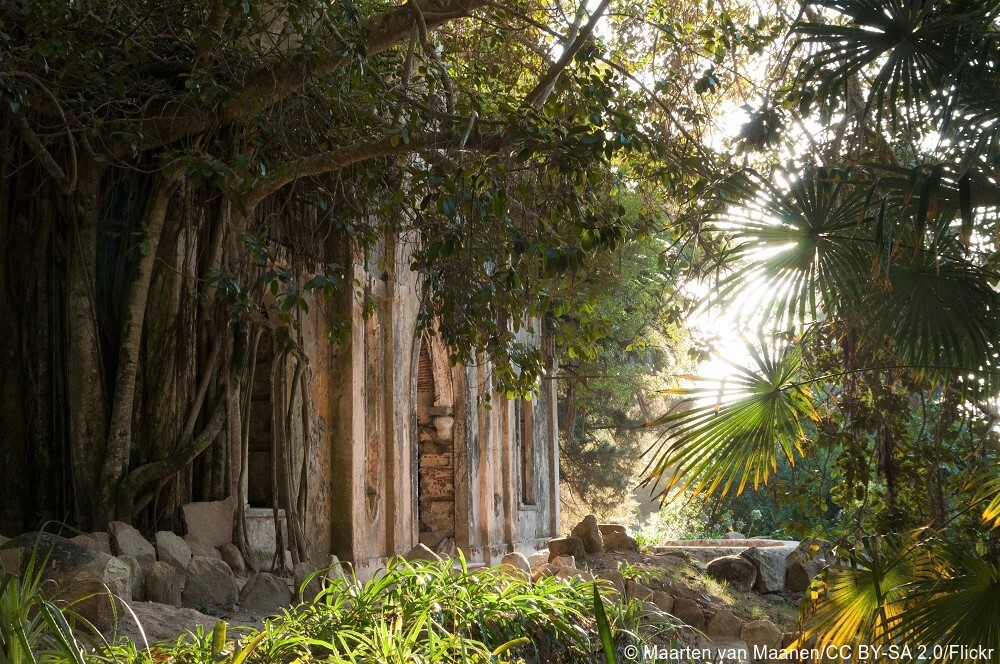
Upon request, Artisans of Leisure can arrange exclusive after-hours tours of the Palace of Monserrate.
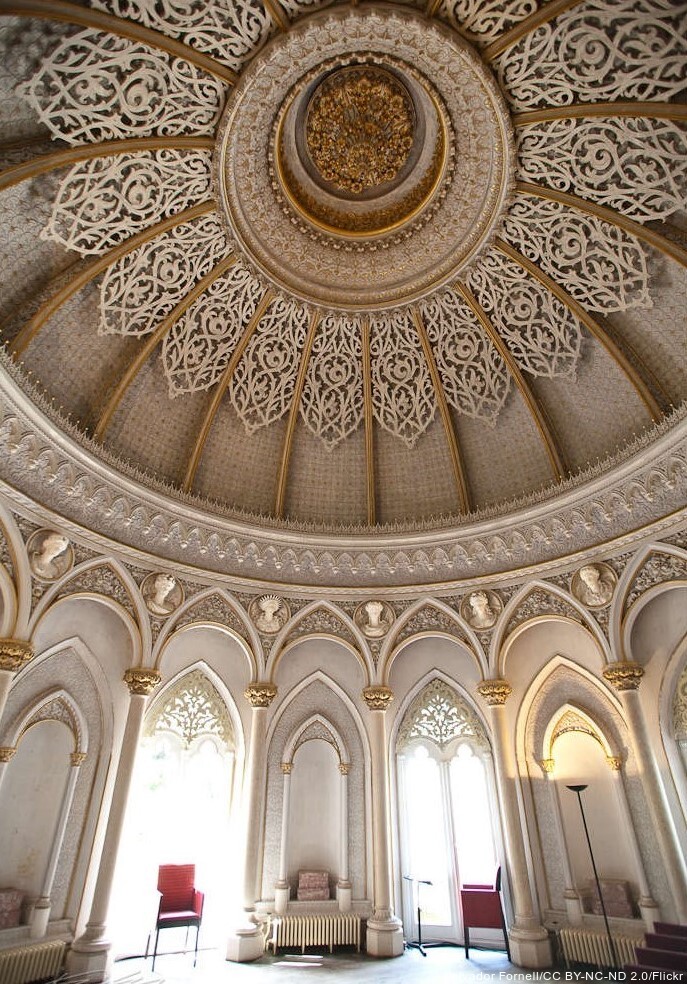
Convent of the Capuchos
The Convent of the Capuchos is an isolated 16th-century Franciscan hermitage hidden in a dense hillside forest of native oaks and shrubs. Eight monks at a time once lived at the small complex, which was dedicated to prayer and meditation.
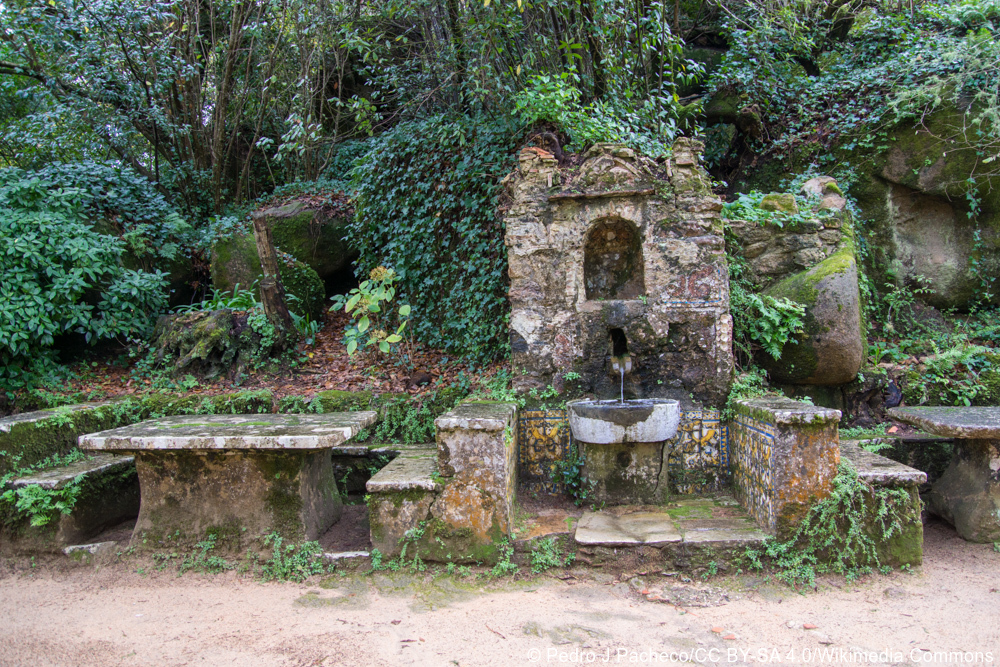
In contrast to its lavish neighbors, the convent’s simple stone buildings blend in with the surrounding landscape and reflect the religious order’s ideals of poverty and humility. The convent was abandoned in the 1800s, leaving the atmospheric ruins to slowly become overgrown with vines, mosses and other greenery.
Cork was used to line monk cells and decorate window and door frames, leading to the nickname the Cork Convent. The complex also has a small chapel, cells with stone beds, a courtyard and a kitchen garden.
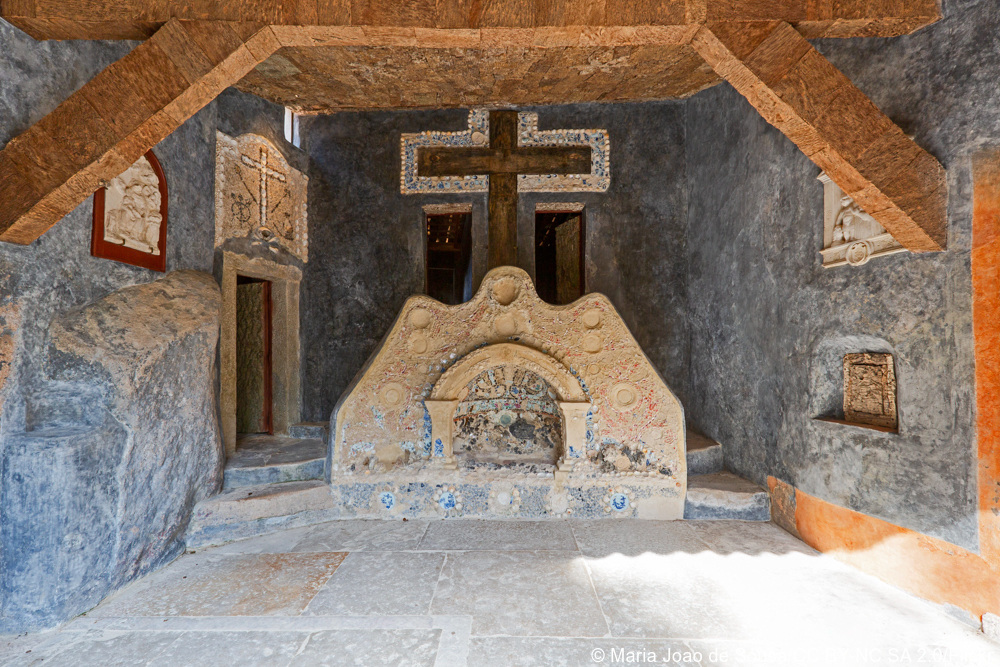
The surrounding forest of oaks, ferns and climbing plants is considered an important remnant of the native woodland of the Sintra Mountains.
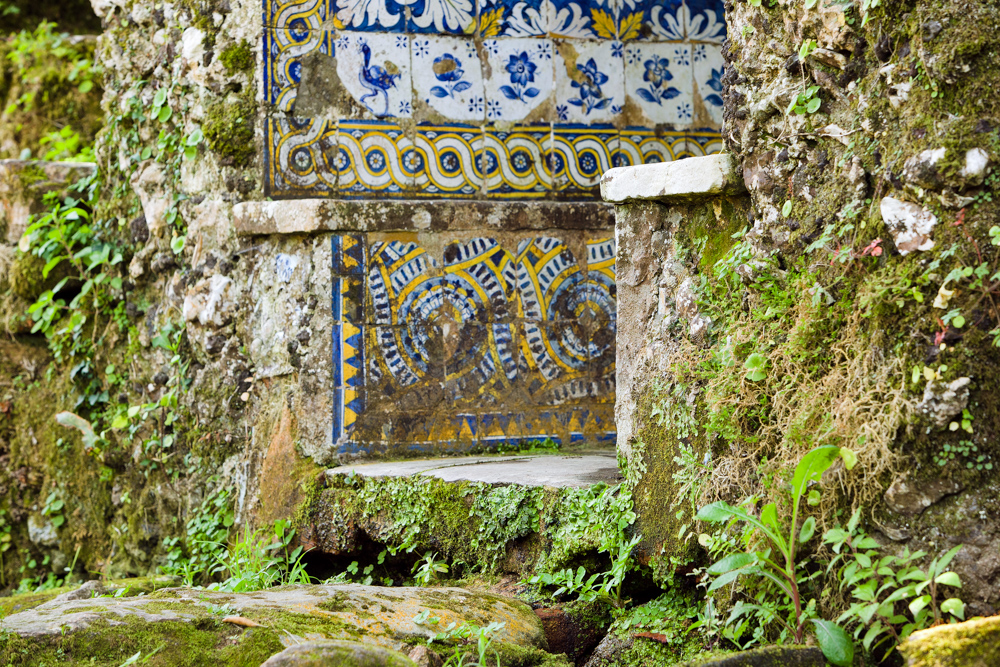
Chalet Biester
Opened to the public for the first time in 2022 following extensive restoration, the privately owned Chalet Biester offers visitors a glimpse into the life of a wealthy Portuguese family.
The villa was built in 1880 in a blend of English Baroque, Gothic and Art Nouveau styles. The interiors abound with ornate stuccowork, carved ceilings, stained glass, and whimsical wall and ceiling murals, including sections painted by Luigi Manini, the Italian designer who helped envision Quinta da Regaleira (above).
The surrounding grounds are a lush Romantic parkland of plants imported from around the world, and the hillside setting affords views to central Sintra and the National Palace of Sintra below.
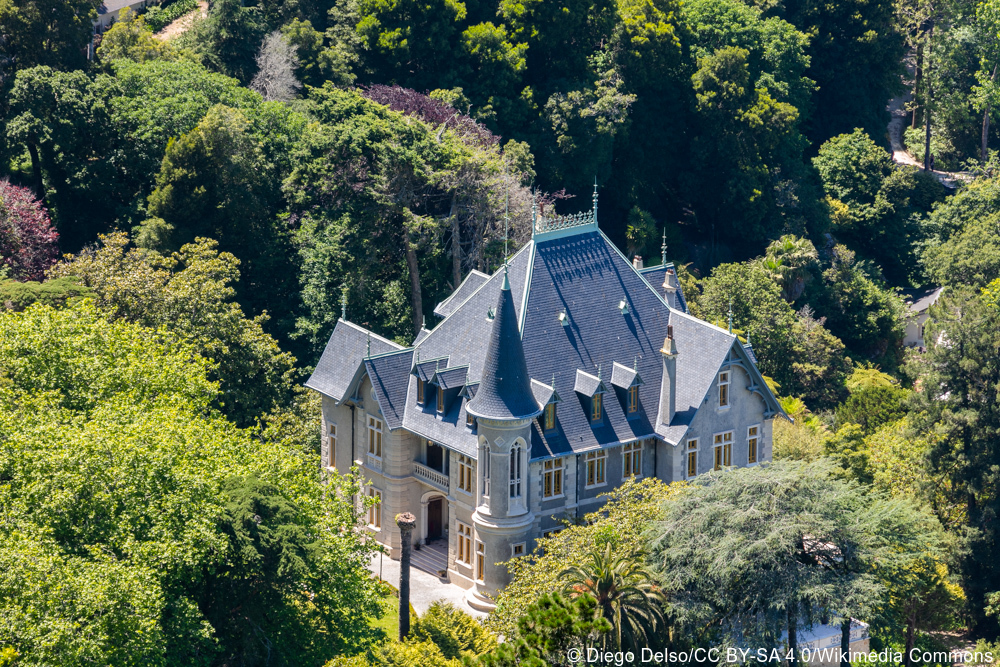
Between Sintra and Lisbon are two other notable palaces that can be visited en route.
National Palace and Gardens of Queluz
Sprawling across 40 acres, the National Palace and Gardens of Queluz was initiated in the 18th century as a summer retreat for the royal family. Over the years, the palace grew into an extravagant complex of Baroque, Rococo and neoclassical architecture among magnificent formal gardens.
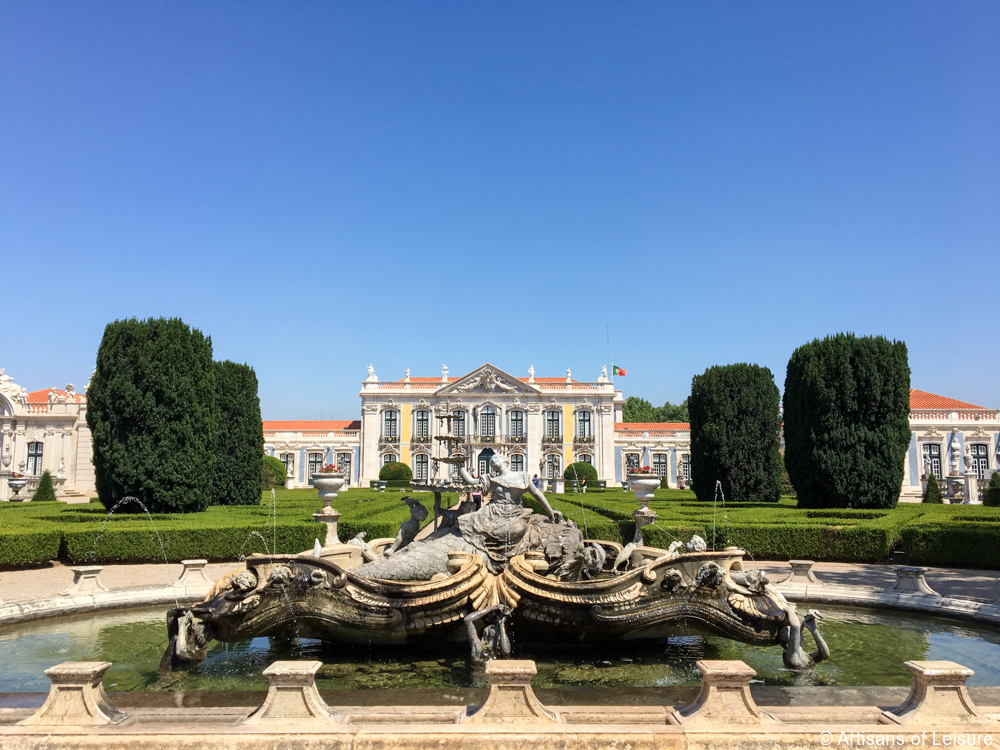
The sumptuous interiors at Queluz Palace reflect the evolving tastes of the court over the three generations that the royal family used the palace.
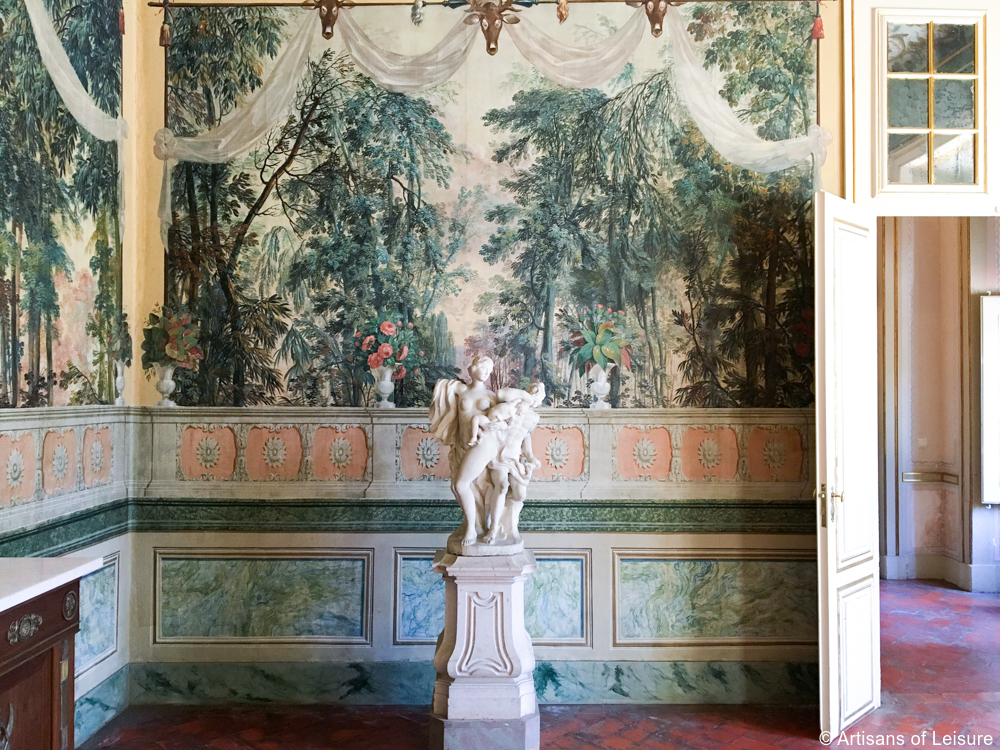
Polychrome tiles adorn reception rooms and corridors.
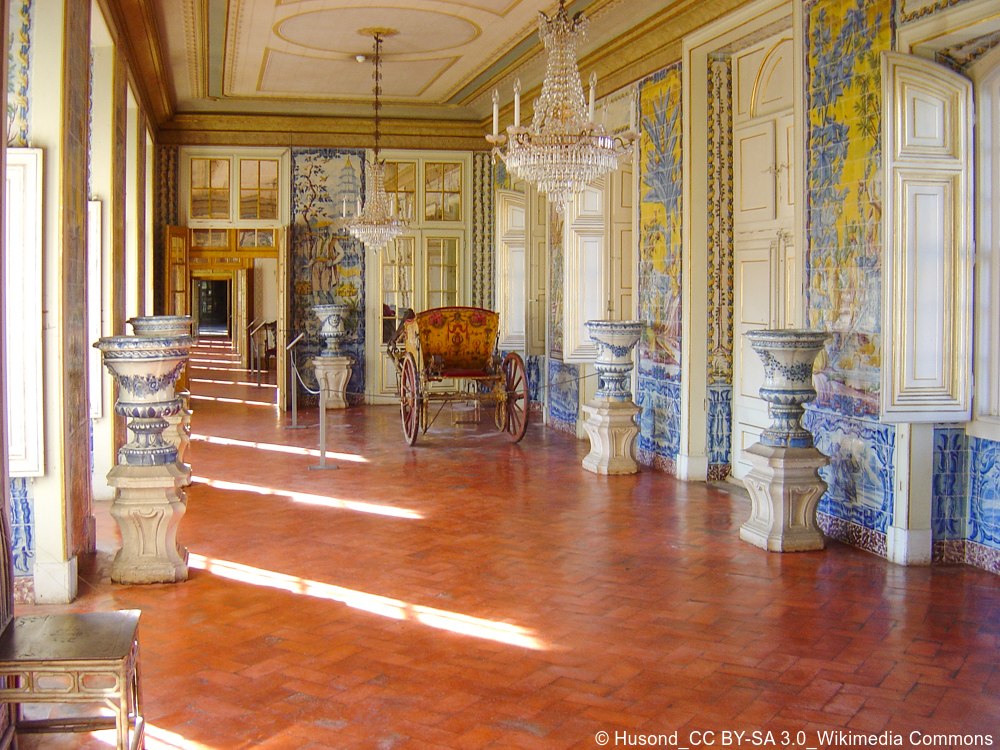
Lavish gilding, frescoes and mirrors decorate staterooms and private apartments.
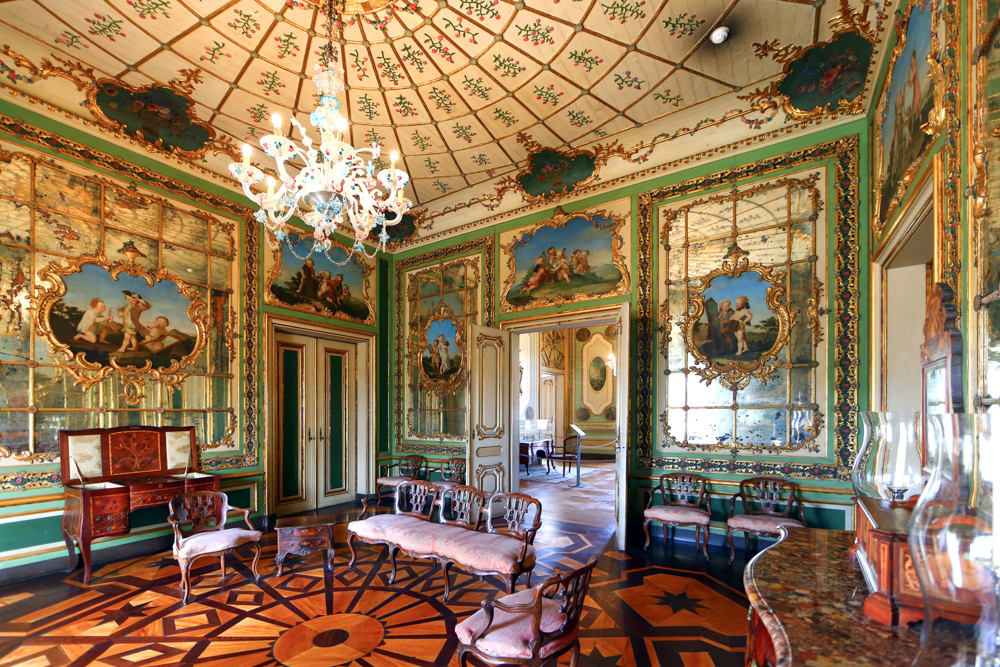
The gardens are a formal arrangement of parterres and tree-lined allees punctuated by classical sculptures and fountains.
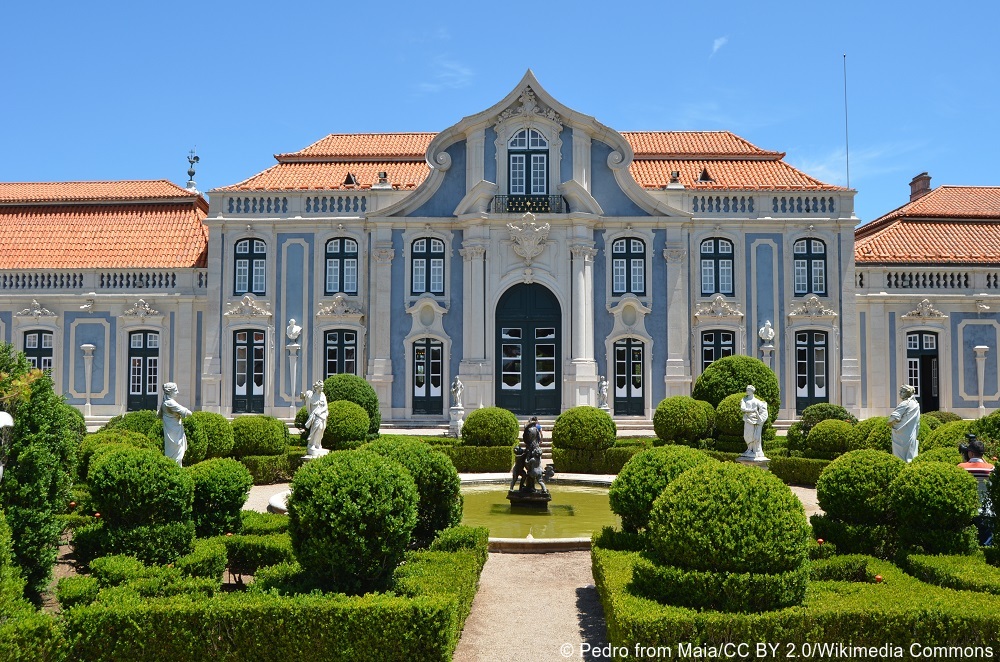
Adding drama and local flavor to the gardens are an artificial waterfall of rough-hewn rocks and a canal lined with azulejos in which the royal family would ride boats and admire the seascapes depicted on the tiles.
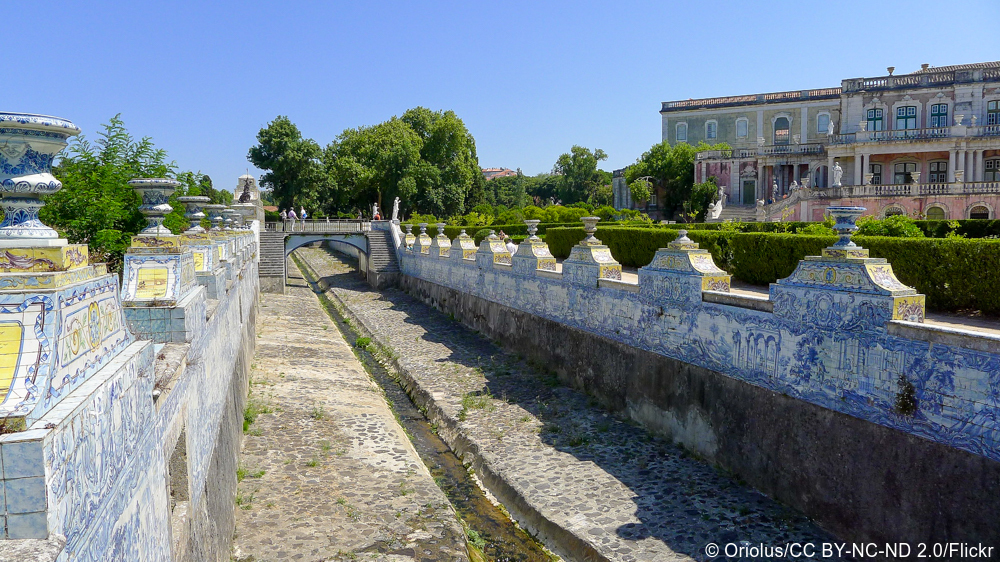
The Portuguese School of Equestrian Art—one of the most elite equestrian academies in the world—has its headquarters in the Queluz Palace gardens.
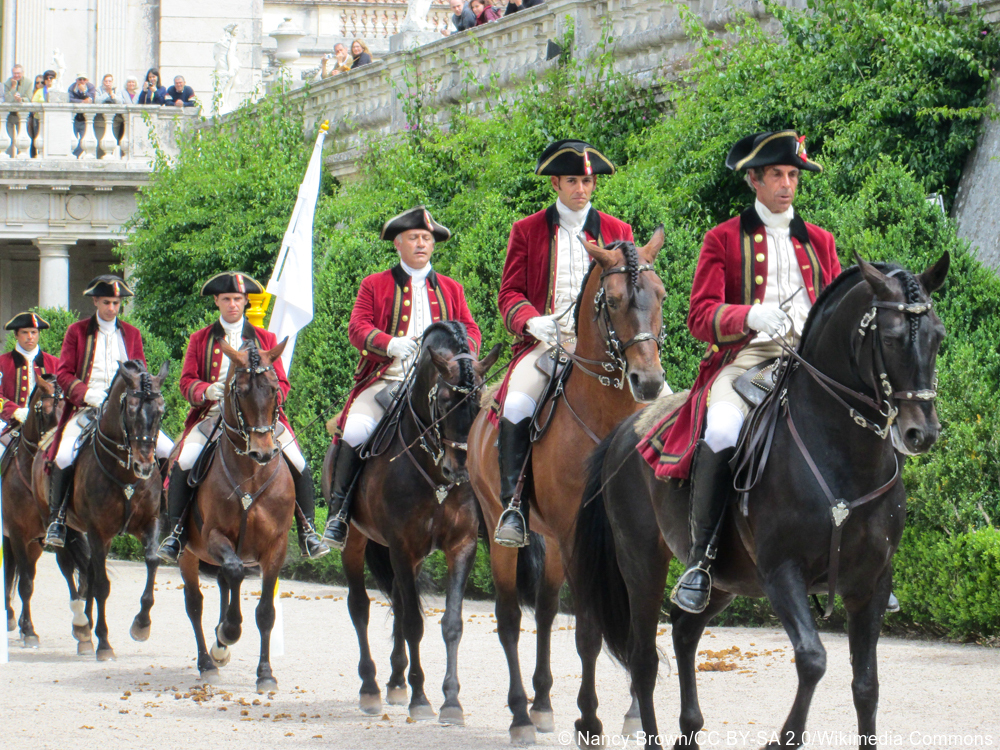
Fronteira Palace
One of our favorite places on the outskirts of Lisbon is the privately owned Fronteira Palace, the home of the marquesses of Fronteira since the 17th century.
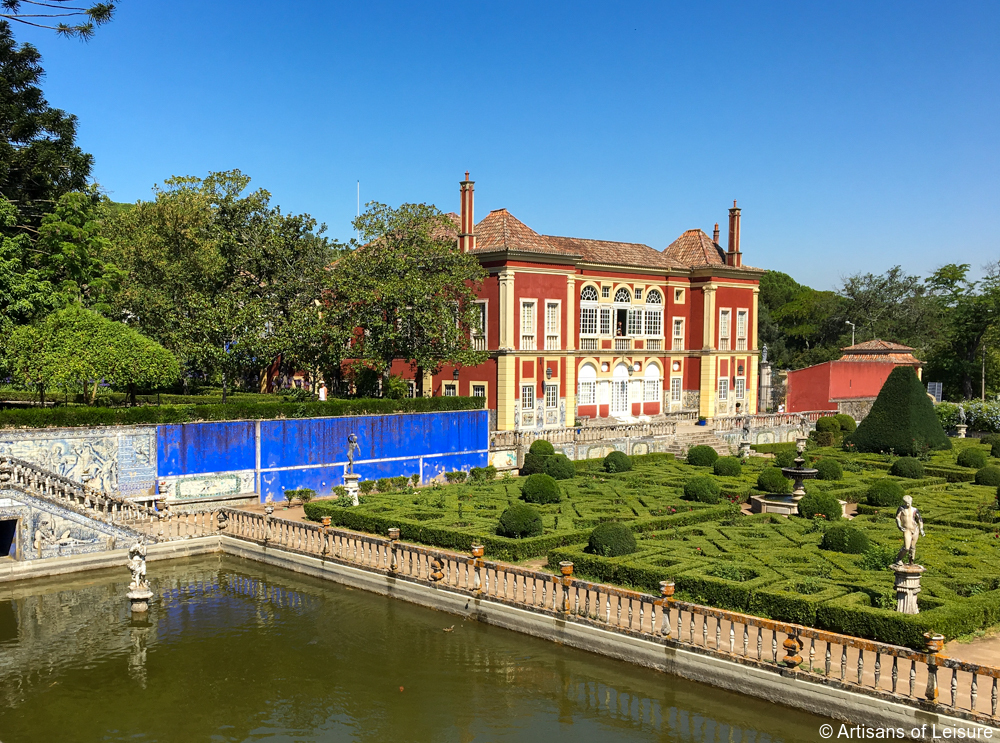
Fronteira Palace is famous for its stunning formal gardens and Portugal’s most extensive collection of 17th-century azulejo tiles in situ.
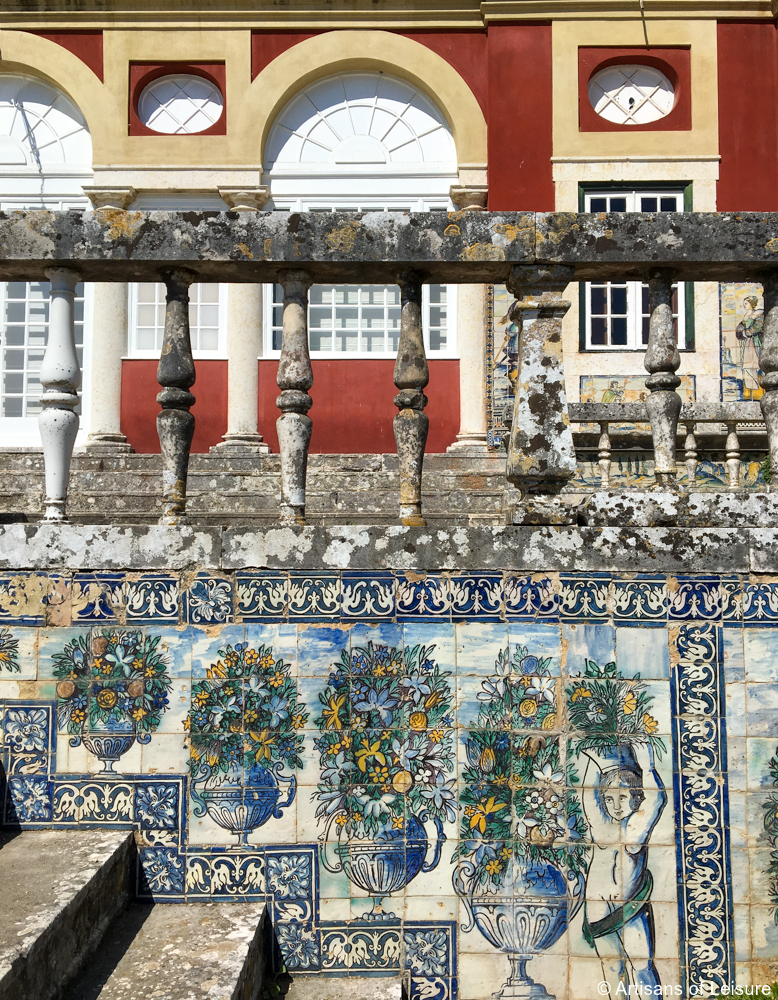
The greenery and parterres of the garden are bordered by walls painted a vivid cobalt blue and a two-story gallery decorated with classical sculptures and extensive tilework.
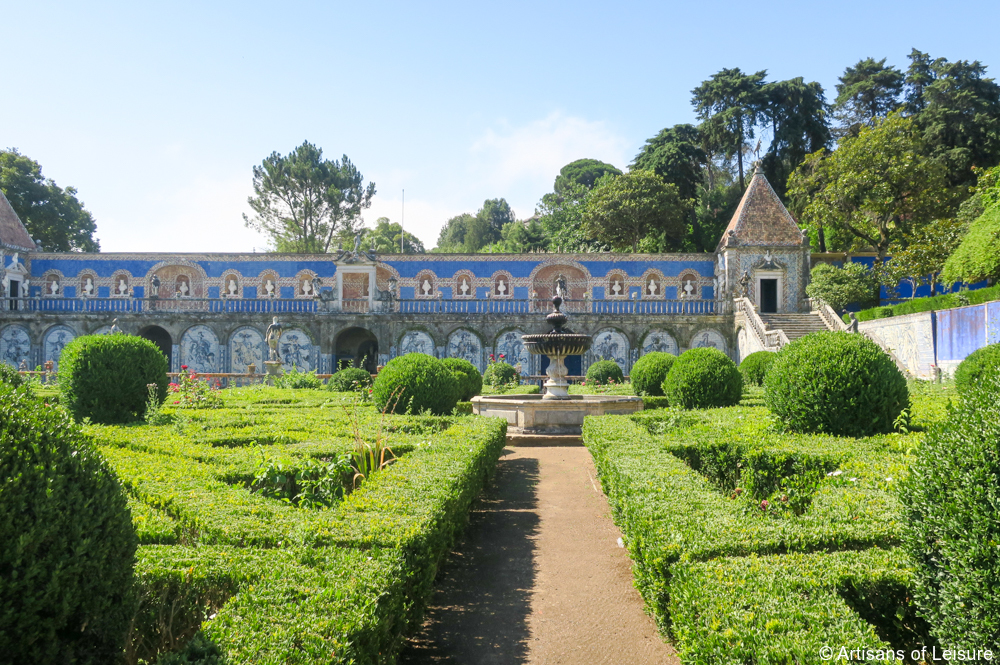
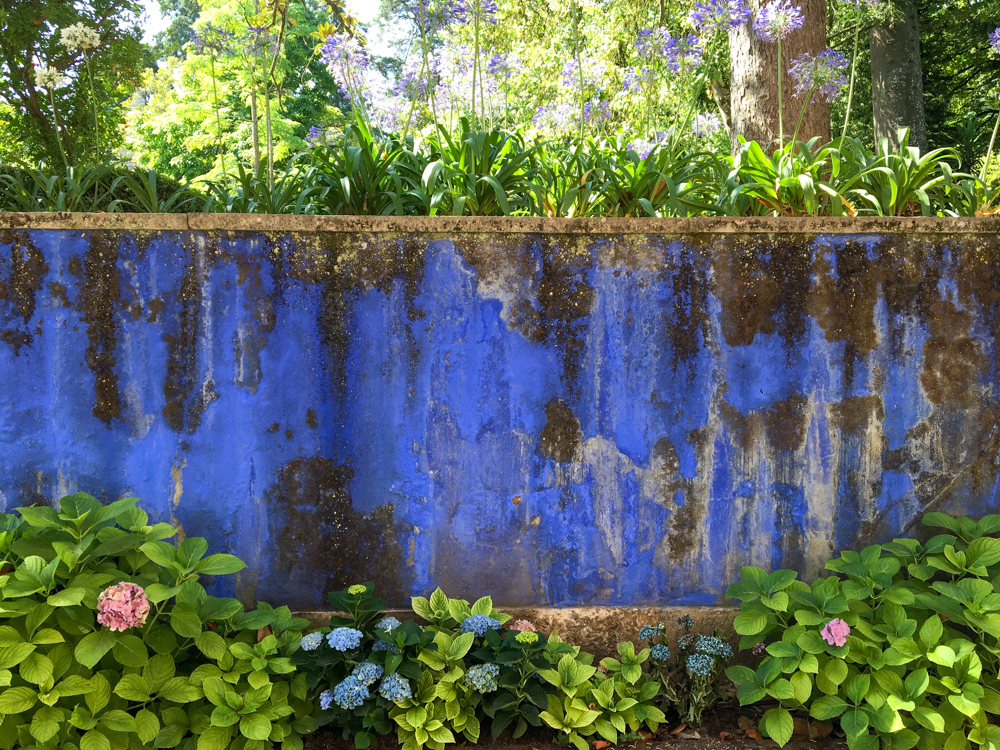
The Casa do Fresco, a garden grotto, has a facade of elaborate rocaille, a combination of stones, shells, broken glass and porcelain pieces.
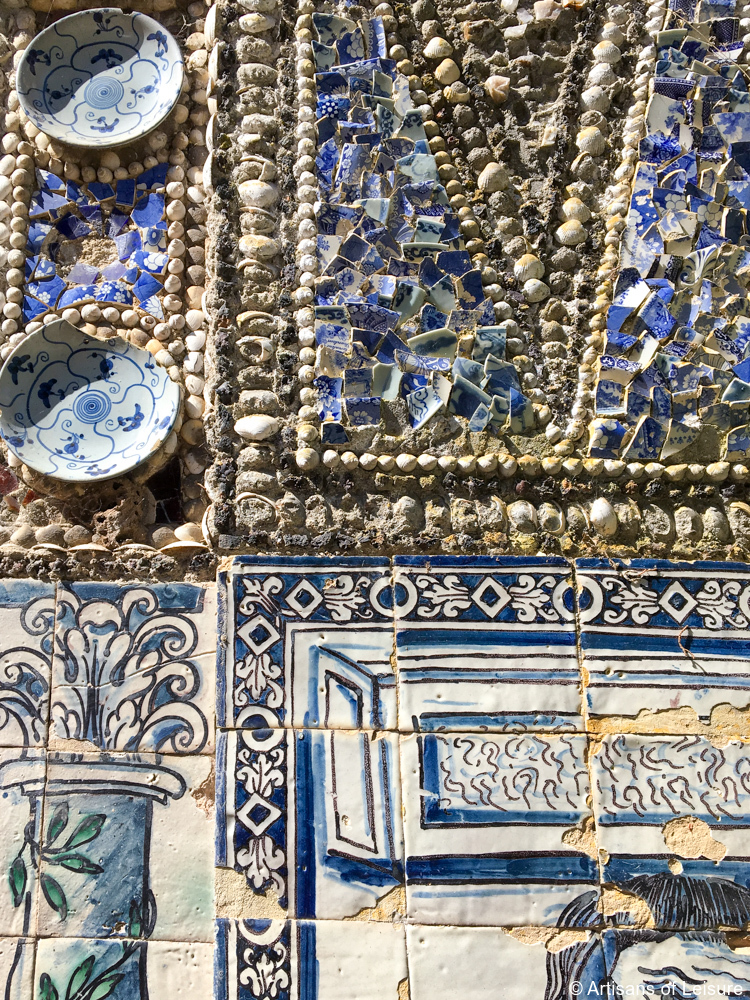
Upon request, we can arrange for our travelers to tour the splendid Baroque interiors of the Fronteira Palace, including the famous Hall of Battles, which has blue-and-white tiles depicting historical conflicts with Spain.
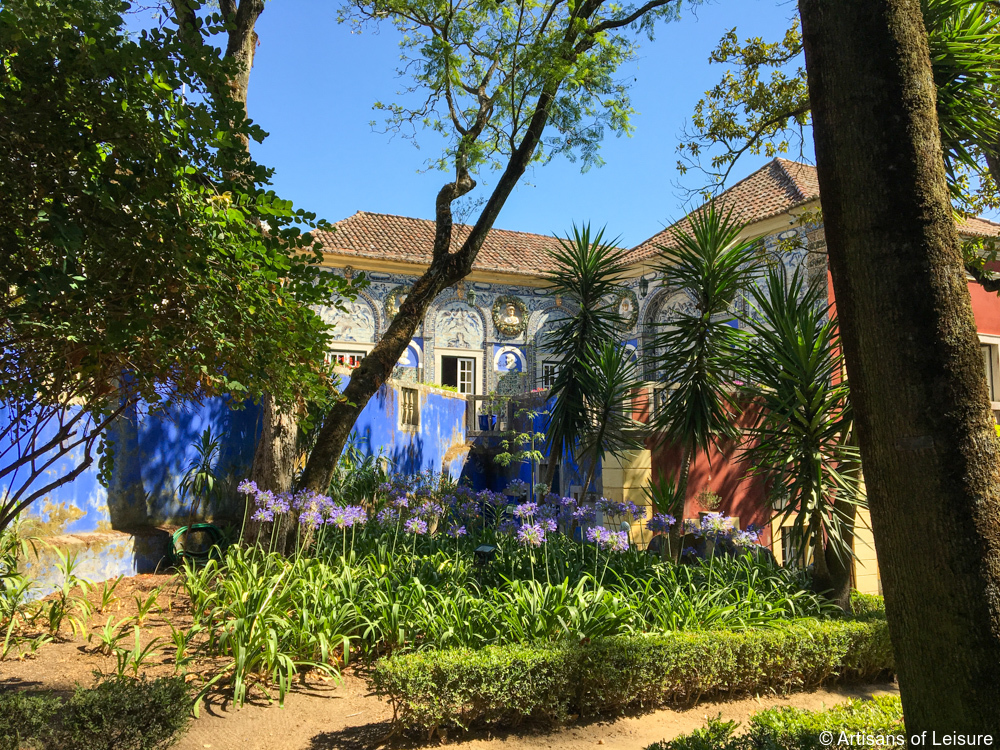
Sintra is a wonderful day trip from Lisbon, though we recommend architecture and garden aficionados spend a night or two in the town to fully enjoy the area’s many attractions.
Contact Artisans of Leisure to begin planning a luxury tour featuring our favorite places in Lisbon and Sintra.
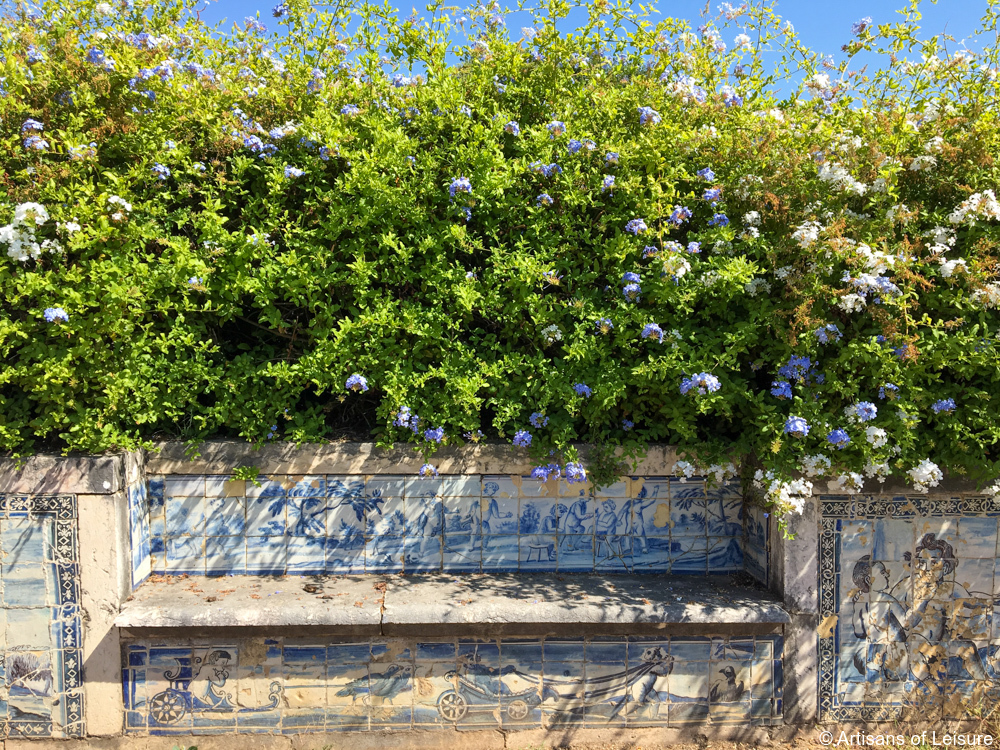

Destinations: Europe, Portugal
Tags: azulejos, blue-and-white tiles, botanical garden tours, Chalet Biester, Convento dos Capuchos, Countess of Edla Chalet, decorative art tours, Fronteira Palace, Fronteira Palace Garden, garden design, garden tours, gardens, insider Portugal, interior design, interiors, Jewish history, Lisboa, Lisbon, Lisbon day tours, Lisbon excursions, Lisbon gardens, Lisbon interiors, Lisbon palaces, Lisbon private tours, Lisbon-Sintra, Monserrate Palace, National Palace of Pena, National Palace of Sintra, palace tours, Pena Park, Portugal, Portugal garden tour, Portuguese design, Portuguese tiles, private Lisbon tours, private Portugal tours, private Sintra tours, Queluz National Palace, Quinta da Regaleira, Sintra, Sintra private tours, Sintra tours

 MENU
MENU